
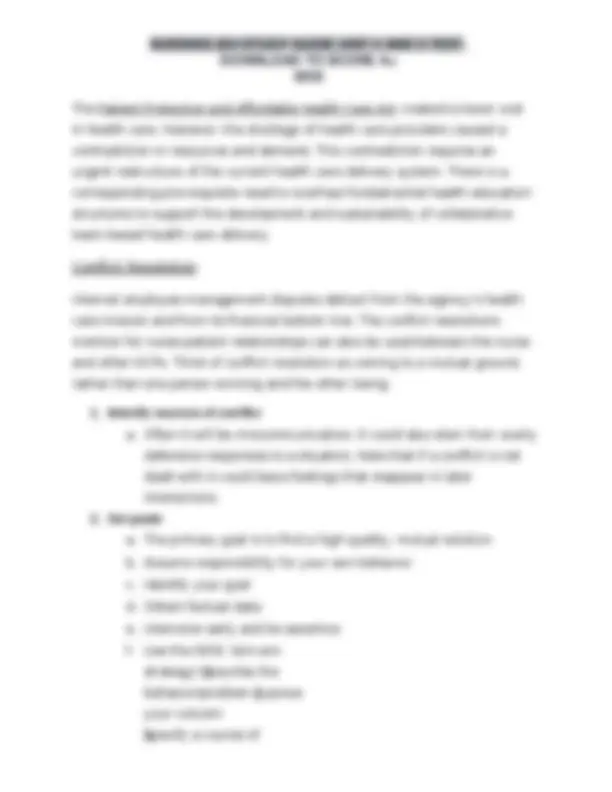
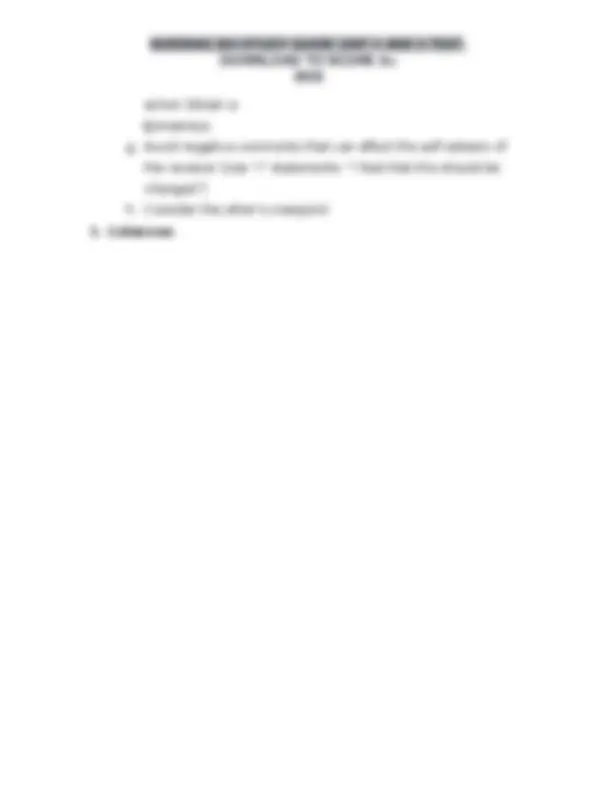
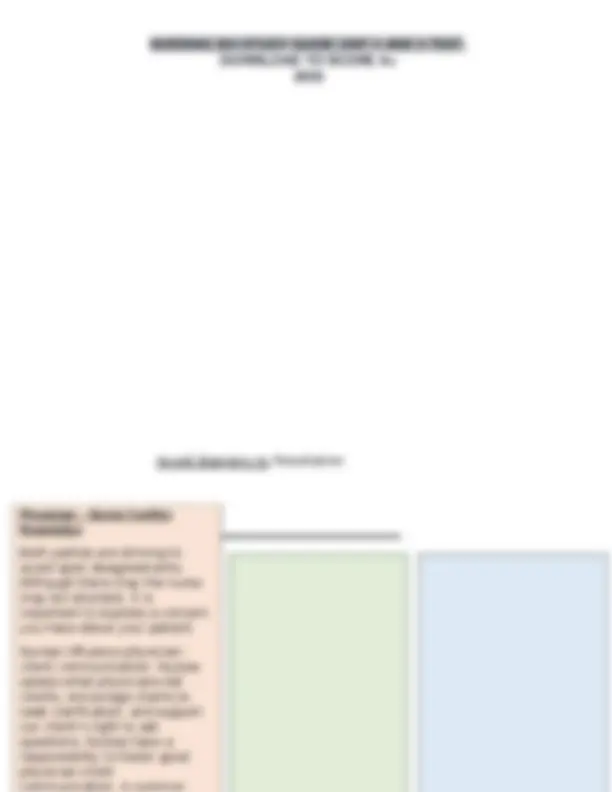
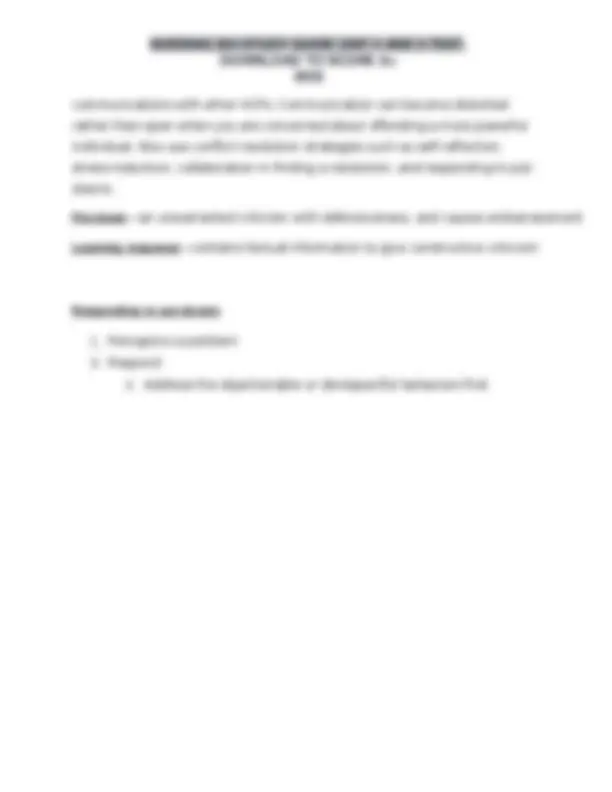
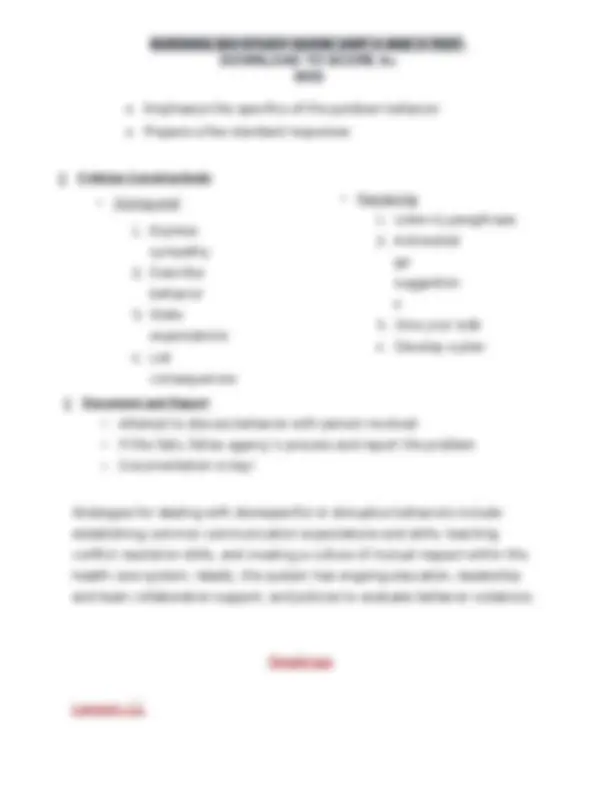
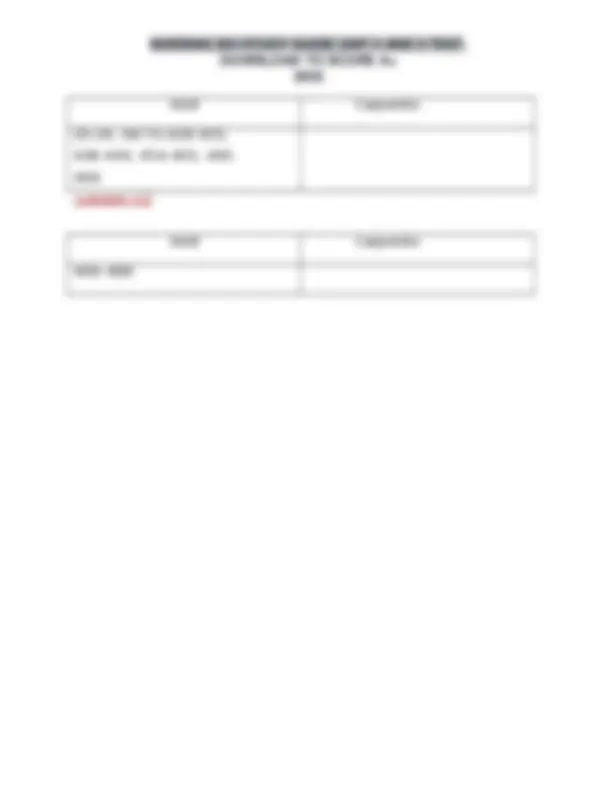
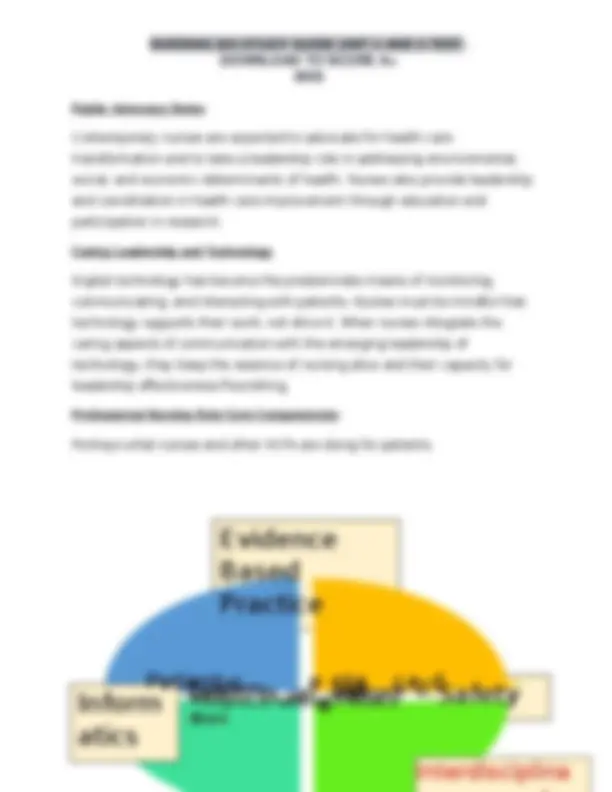
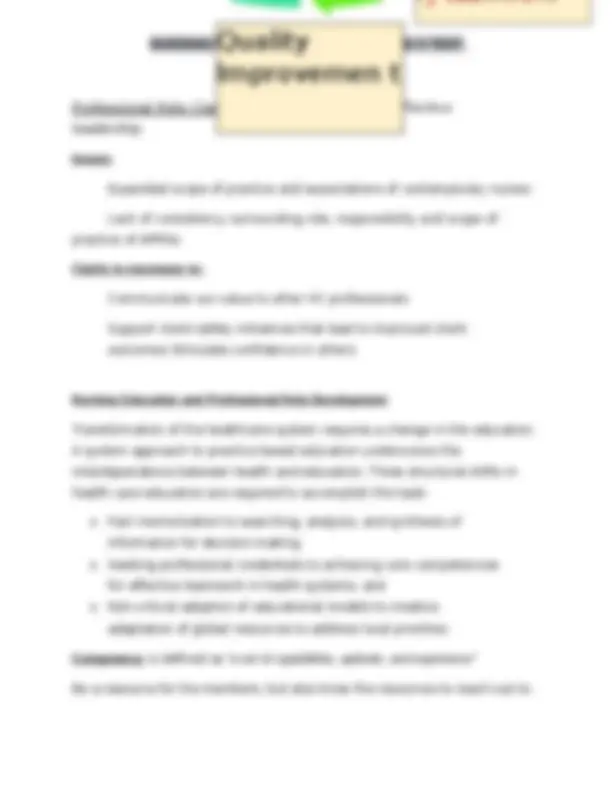
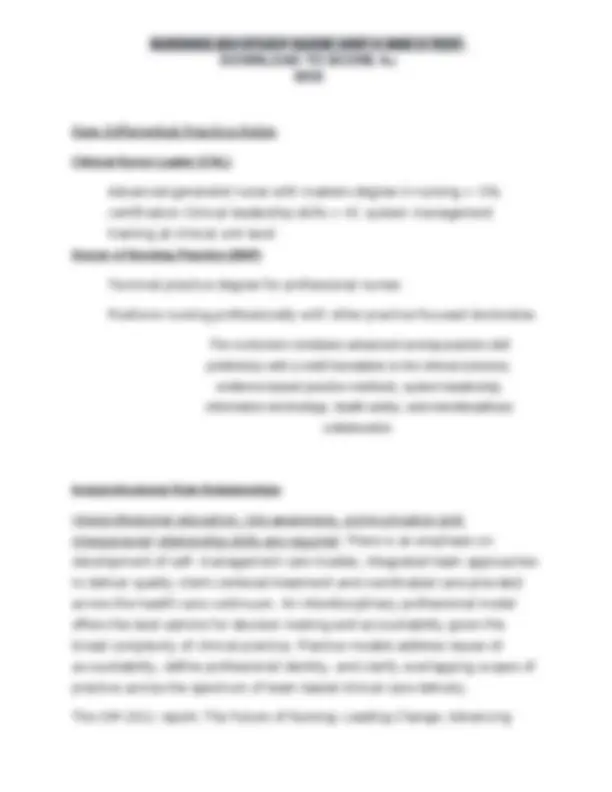
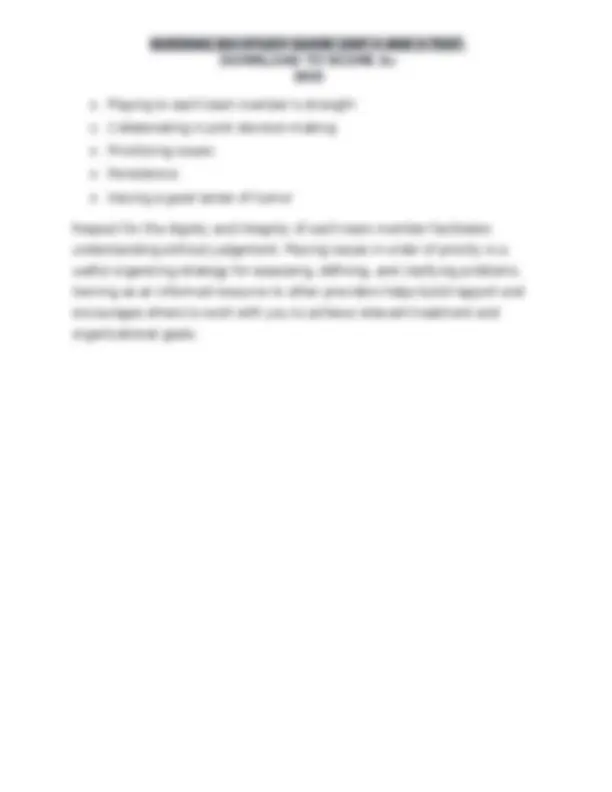
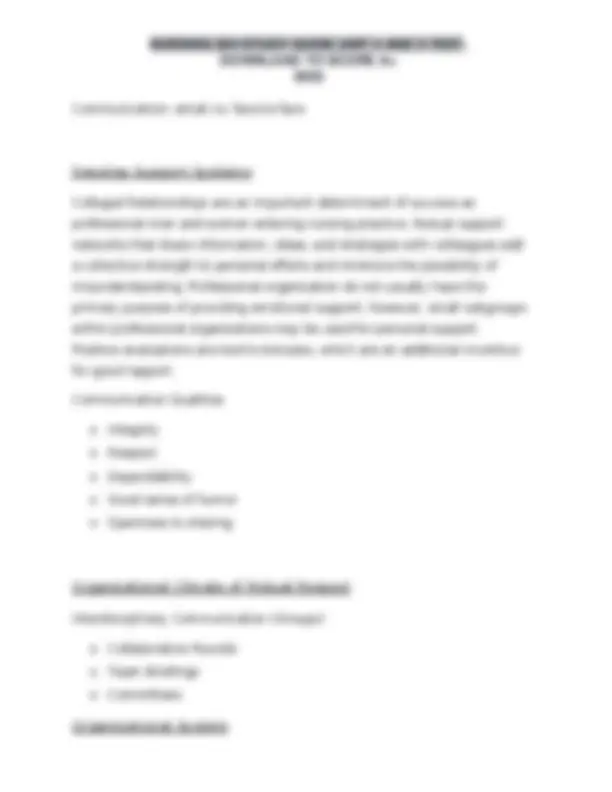
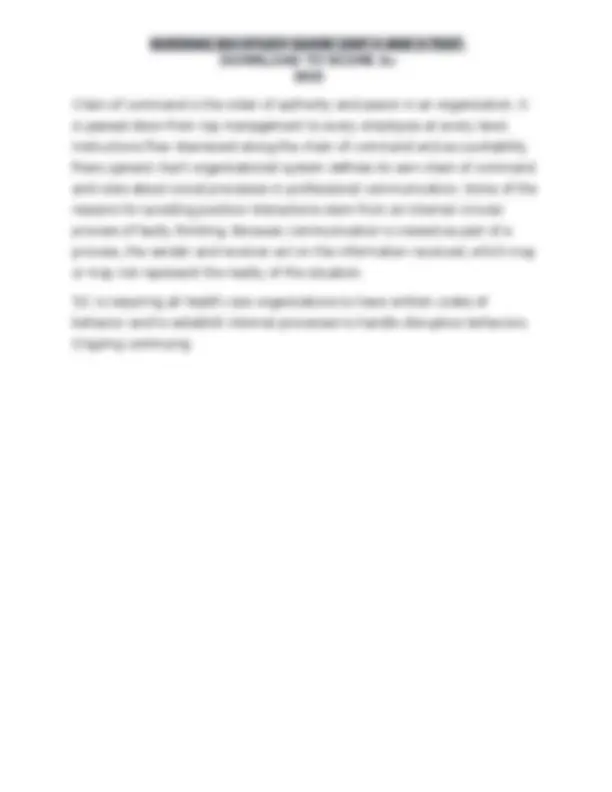
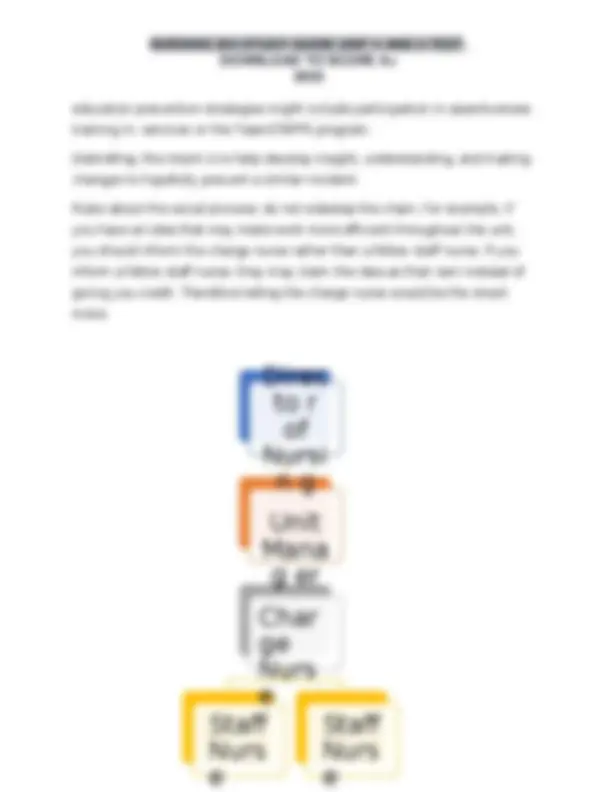
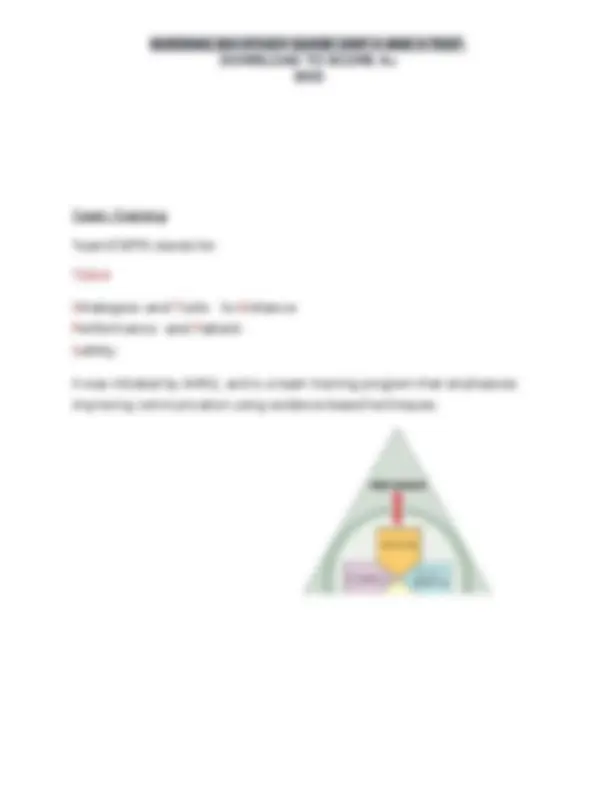

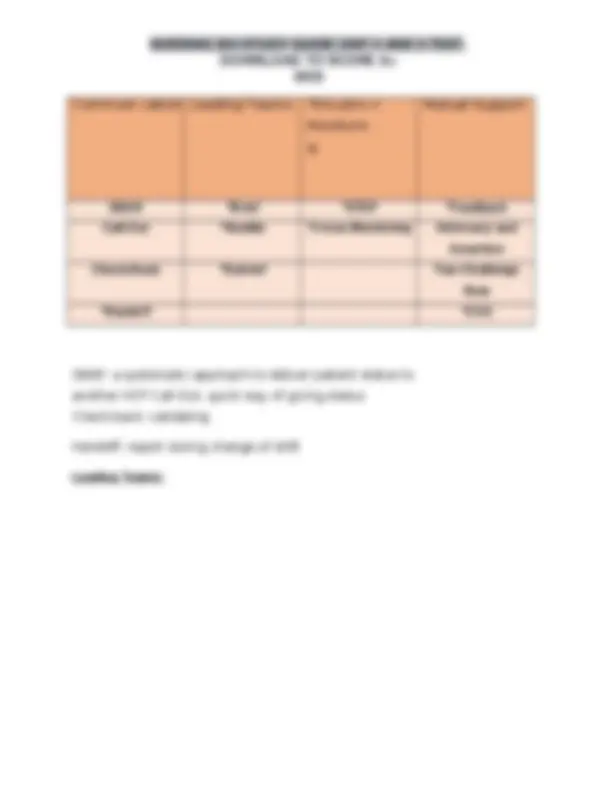
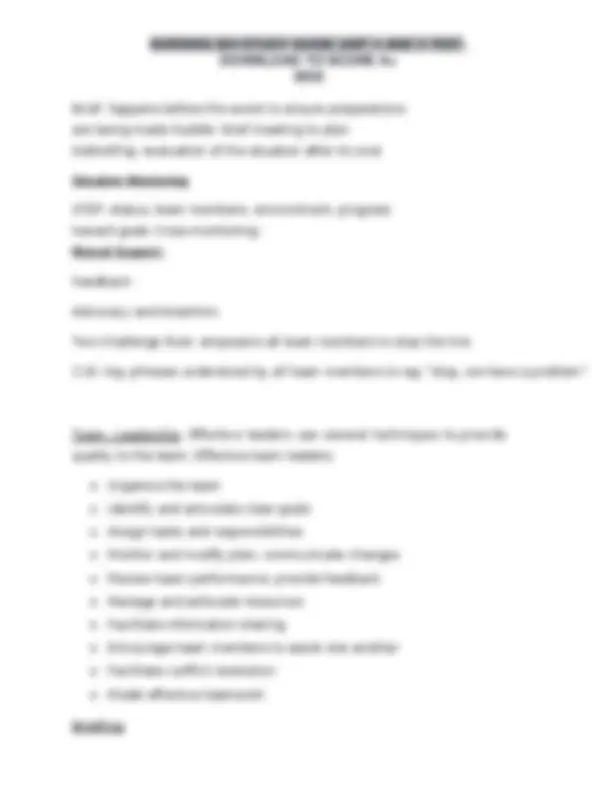

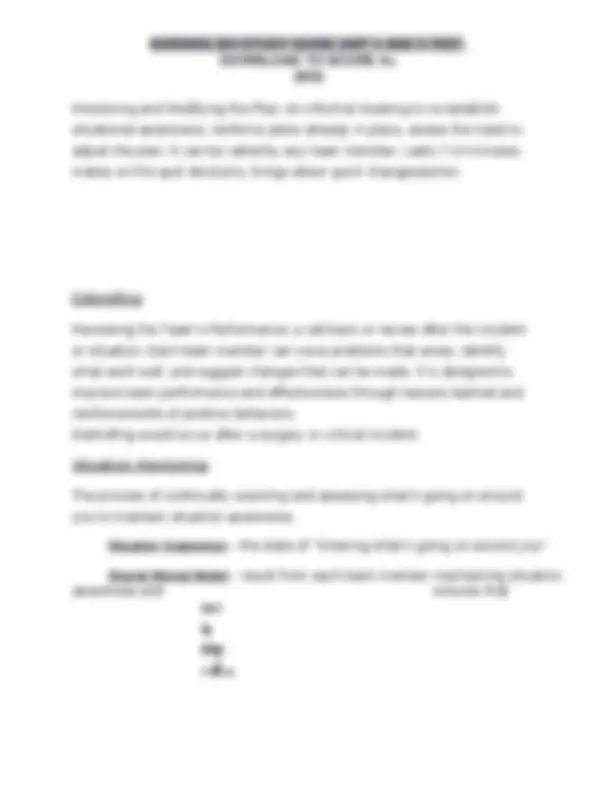

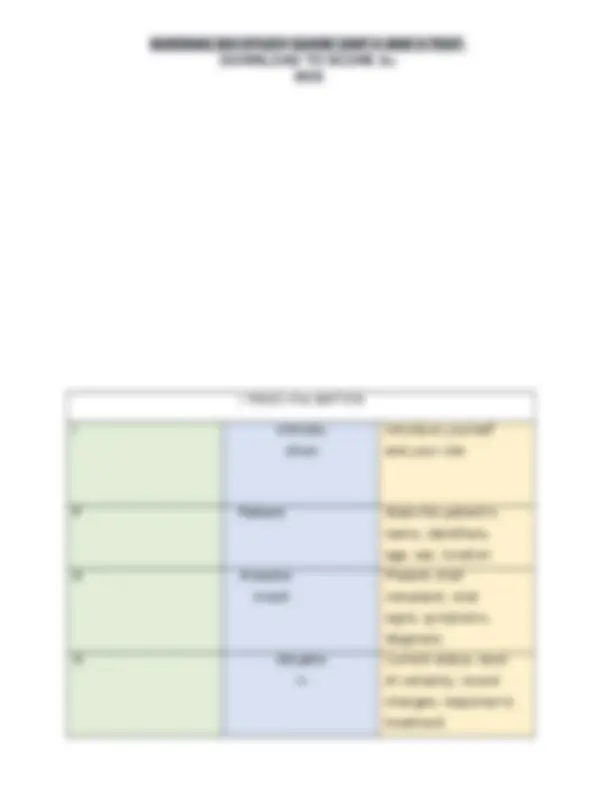
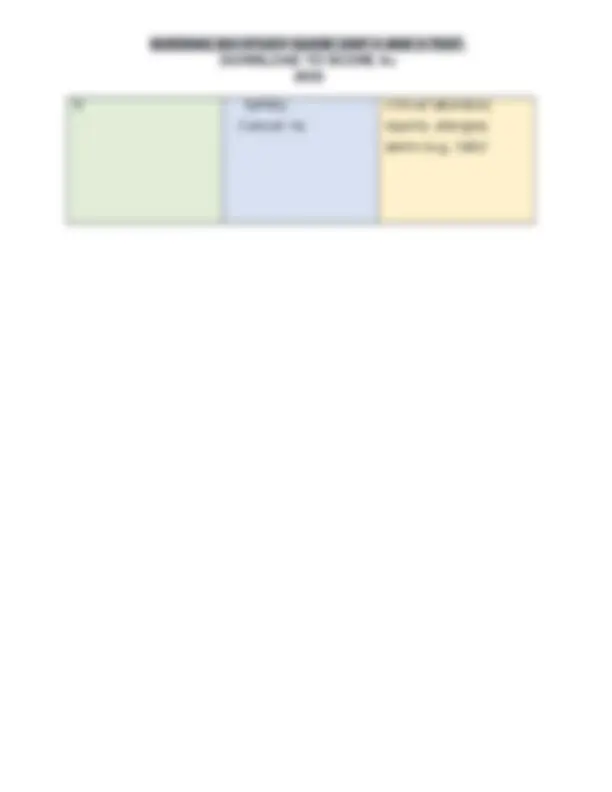
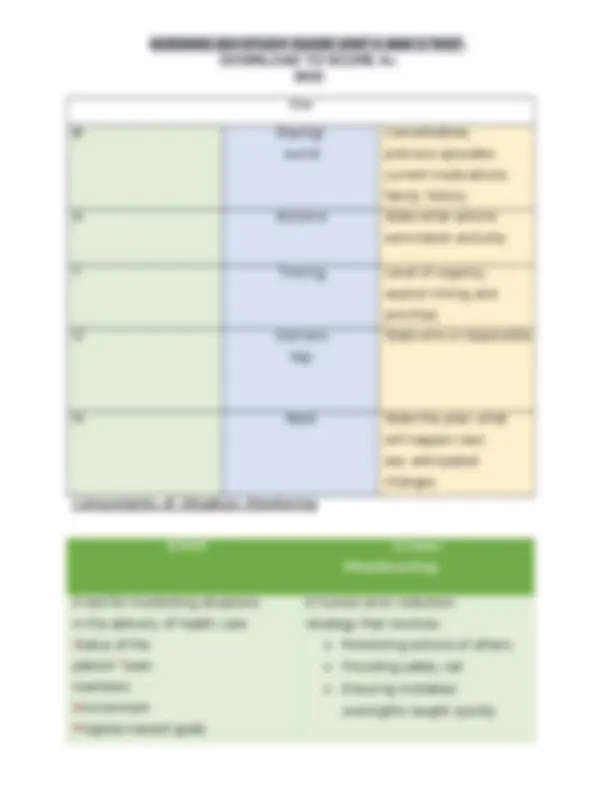

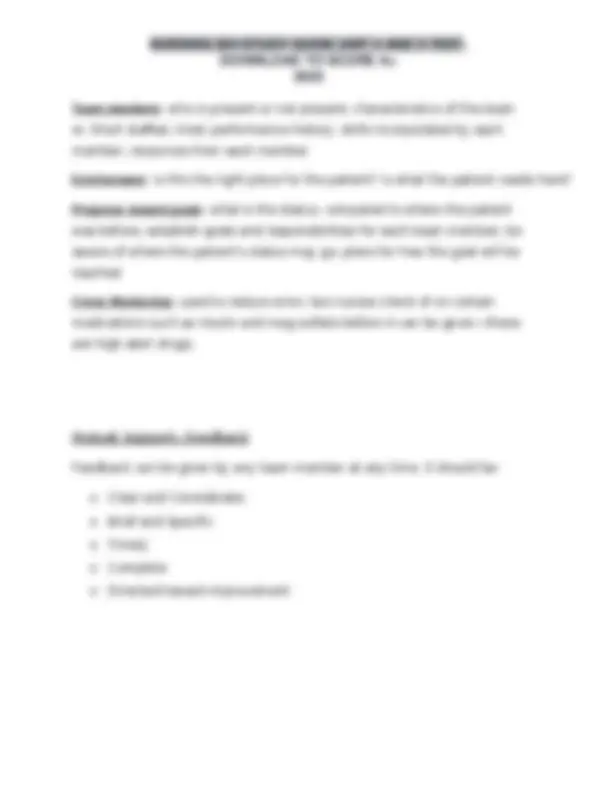
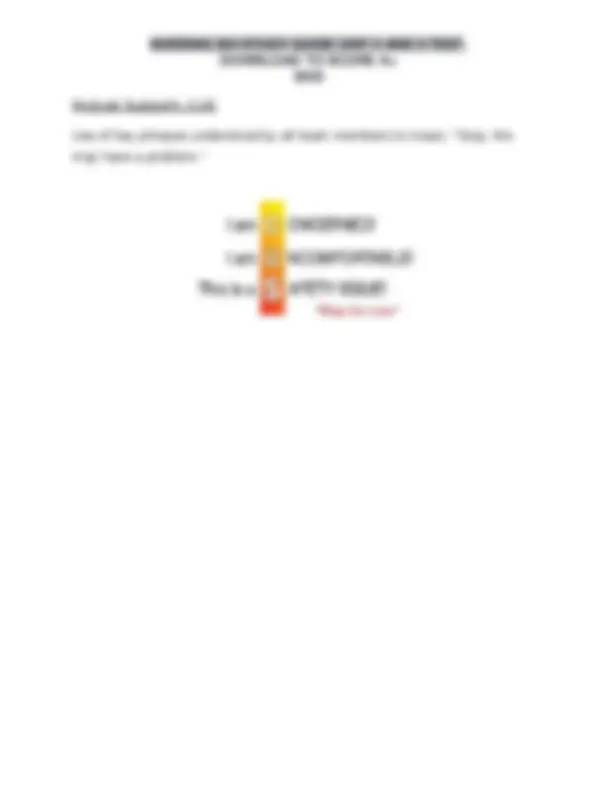
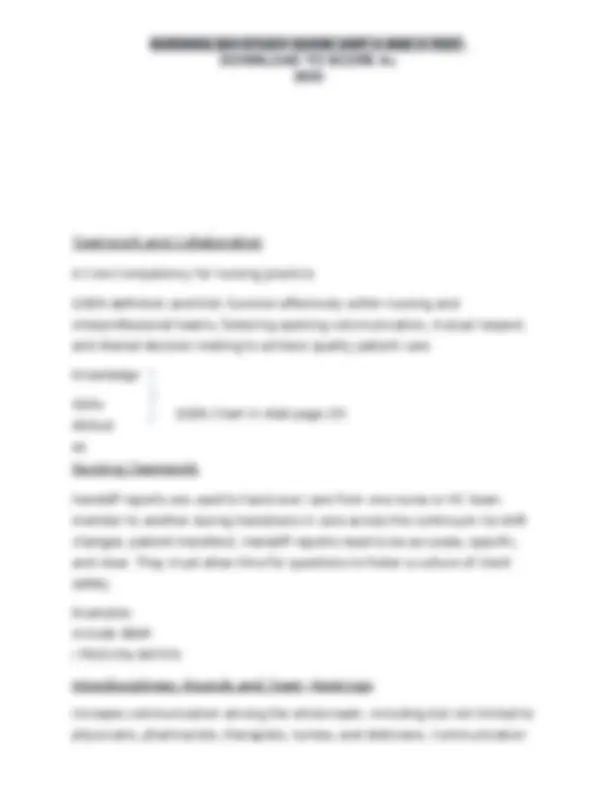


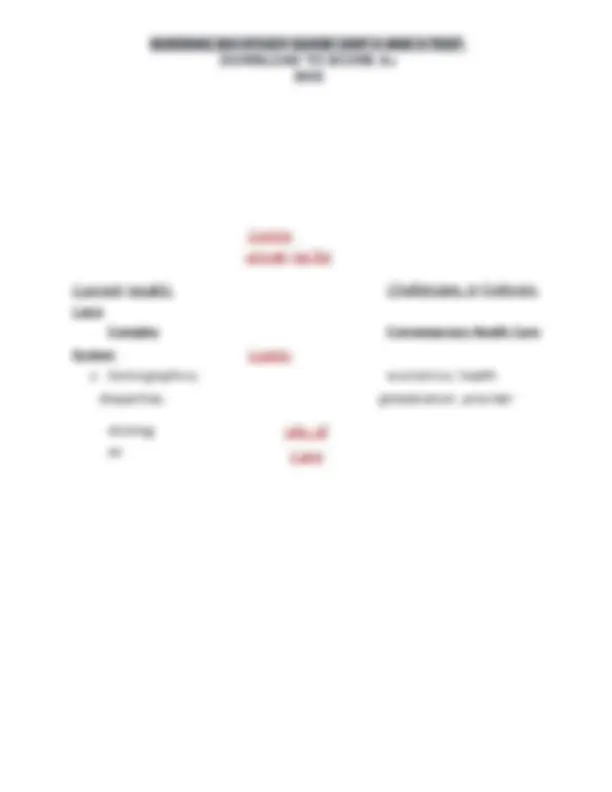
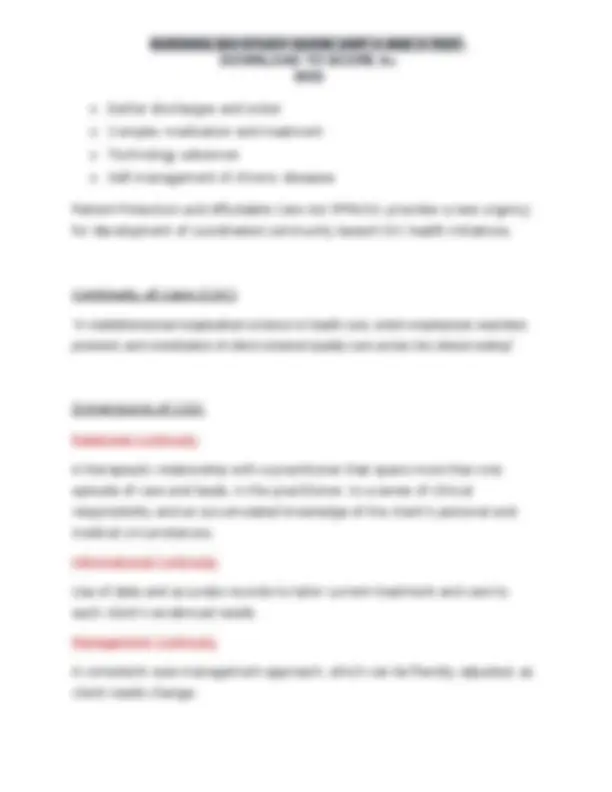
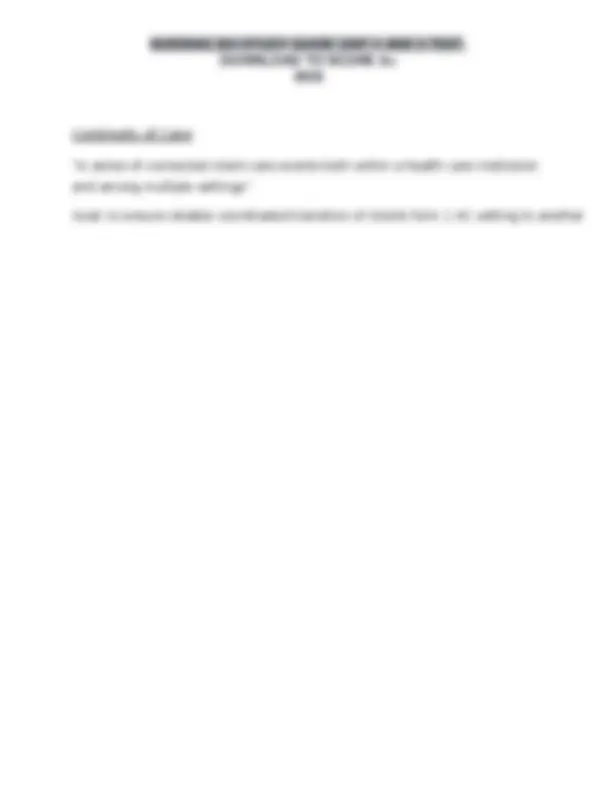
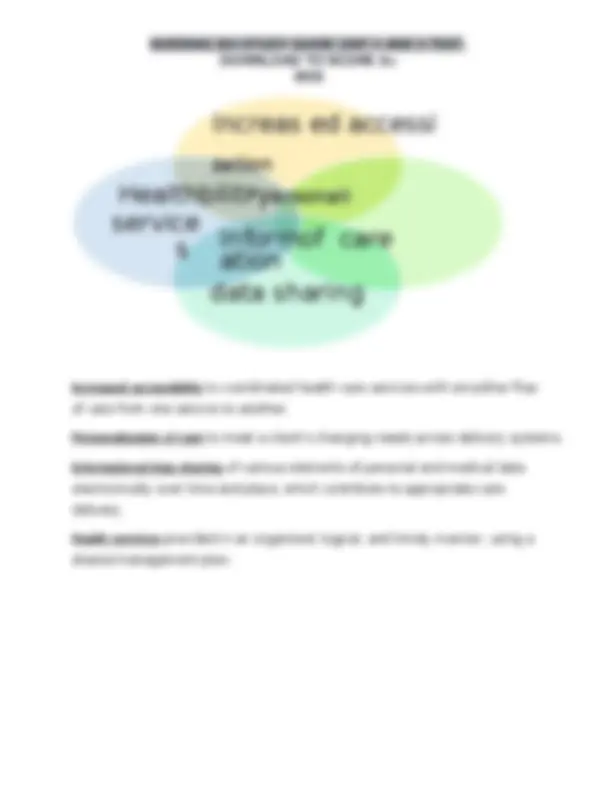
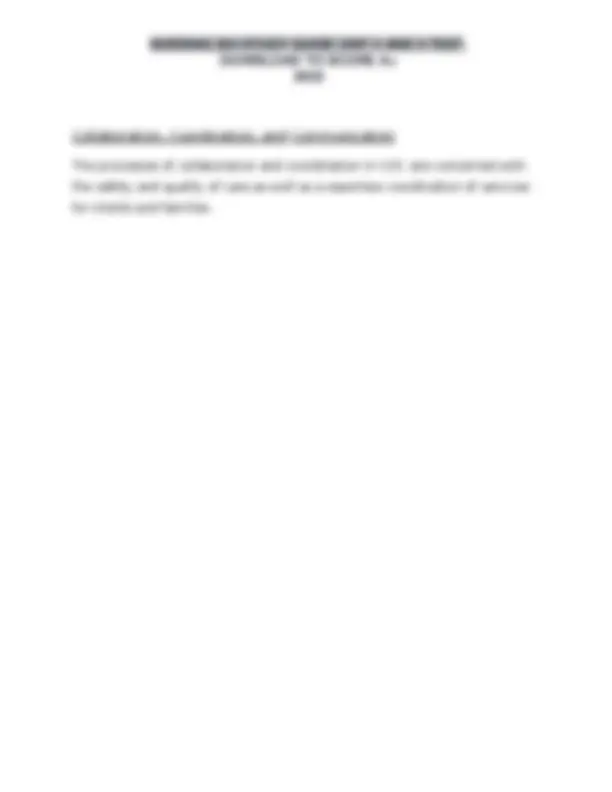
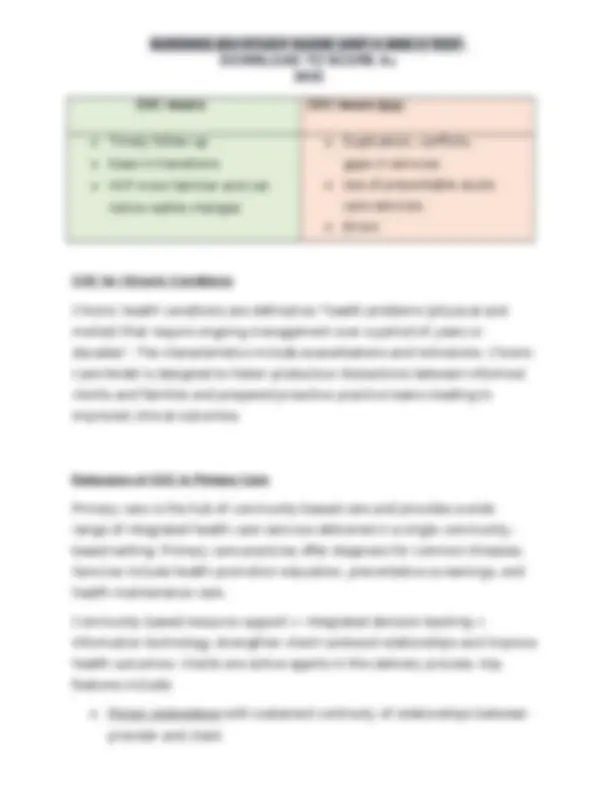
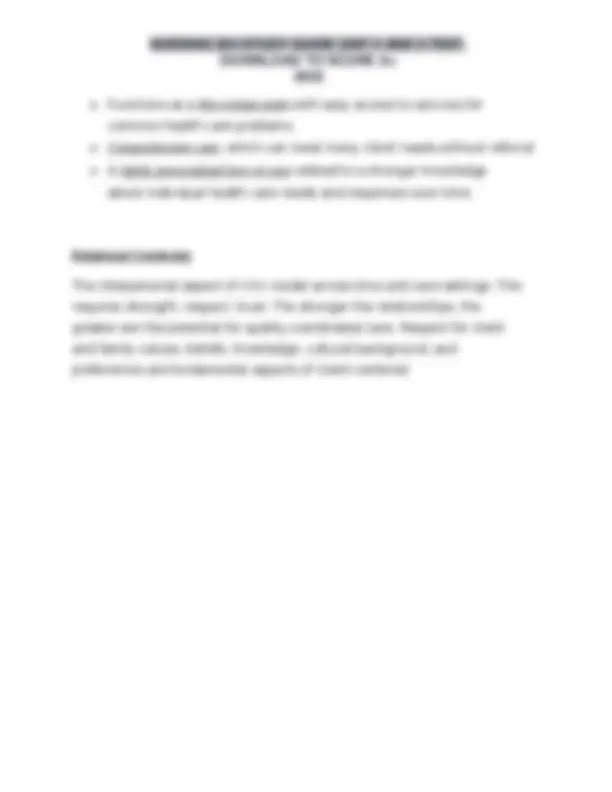
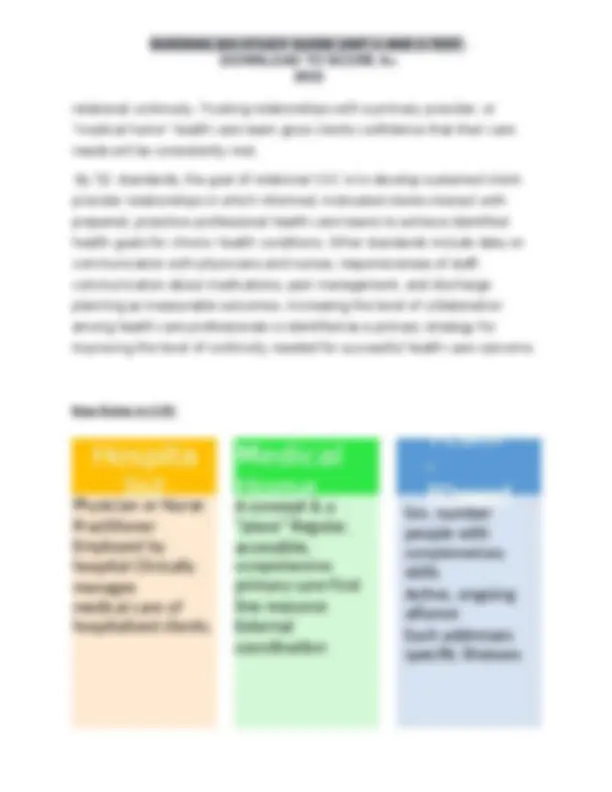
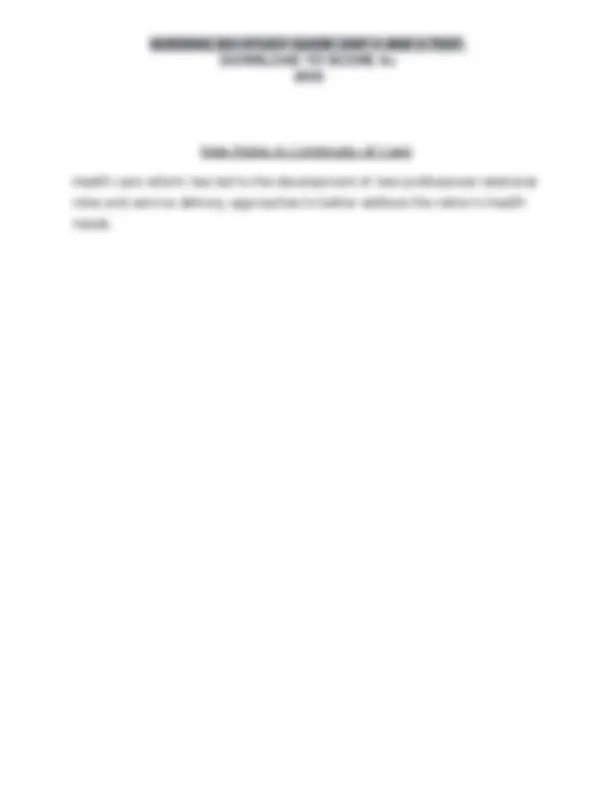
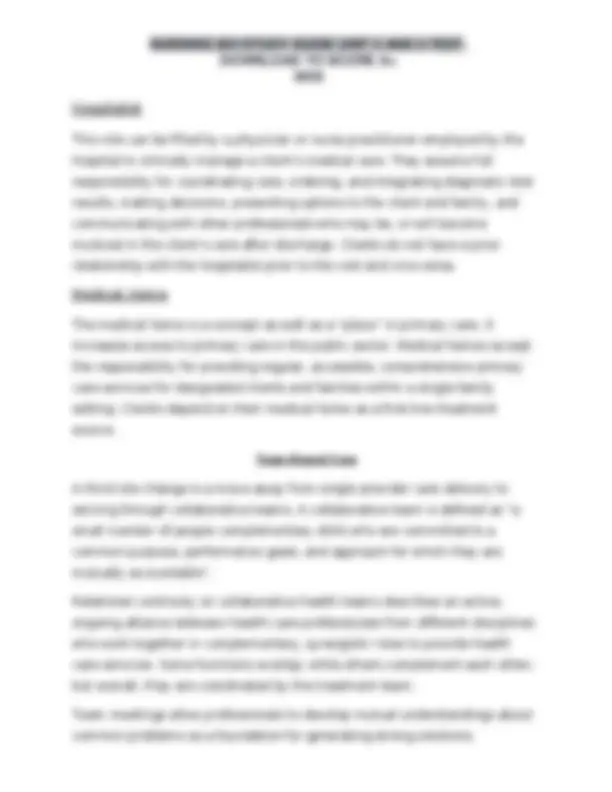
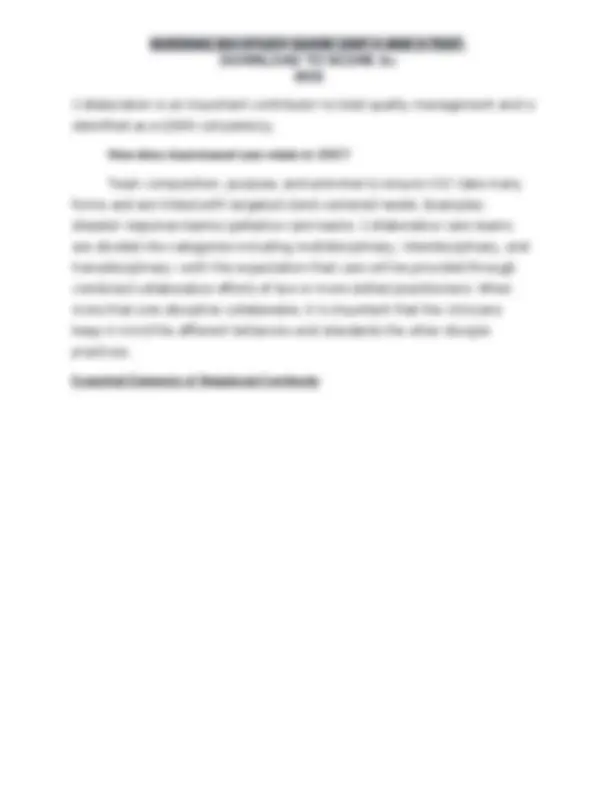
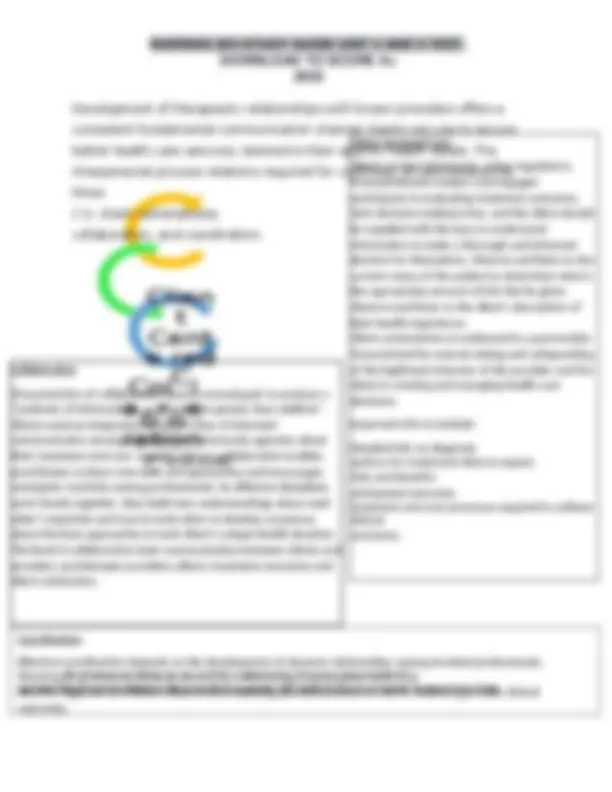


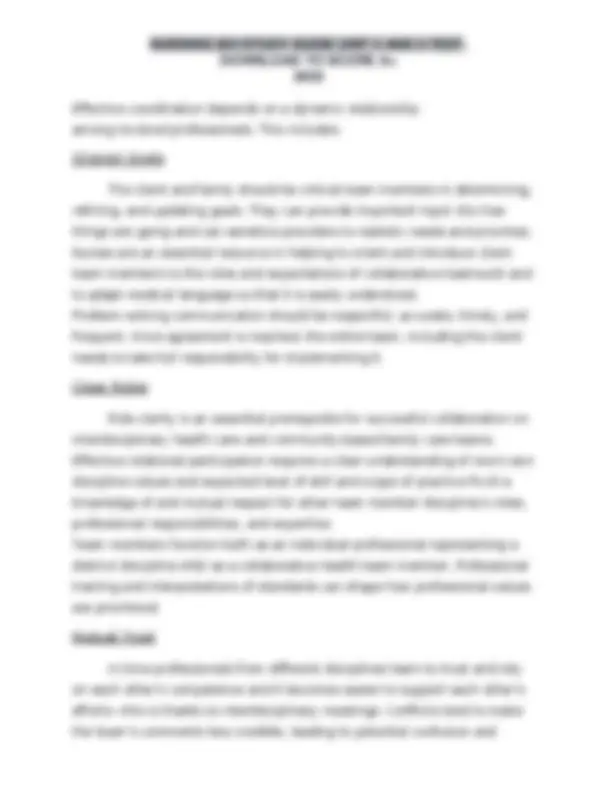
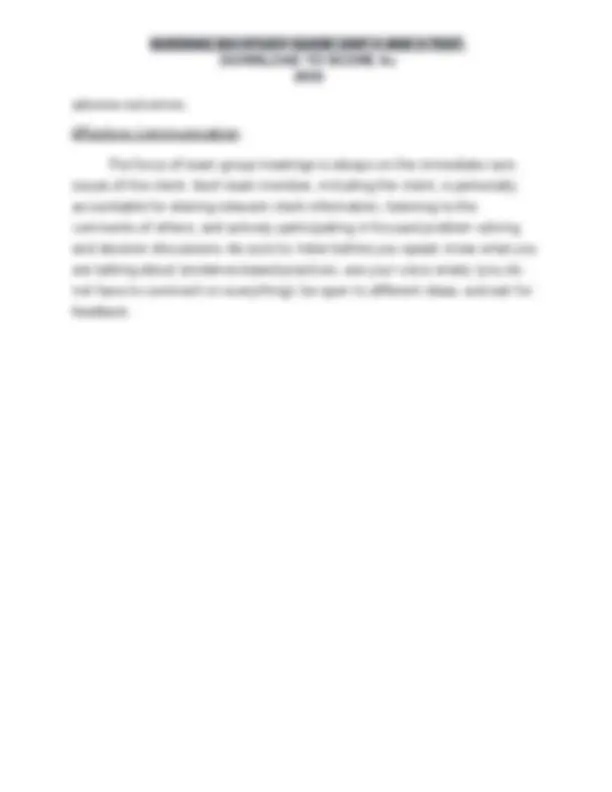
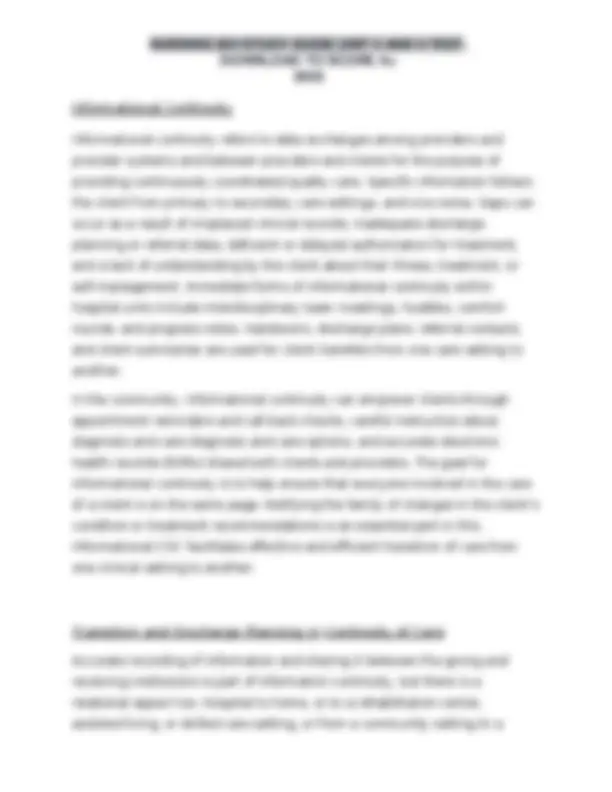
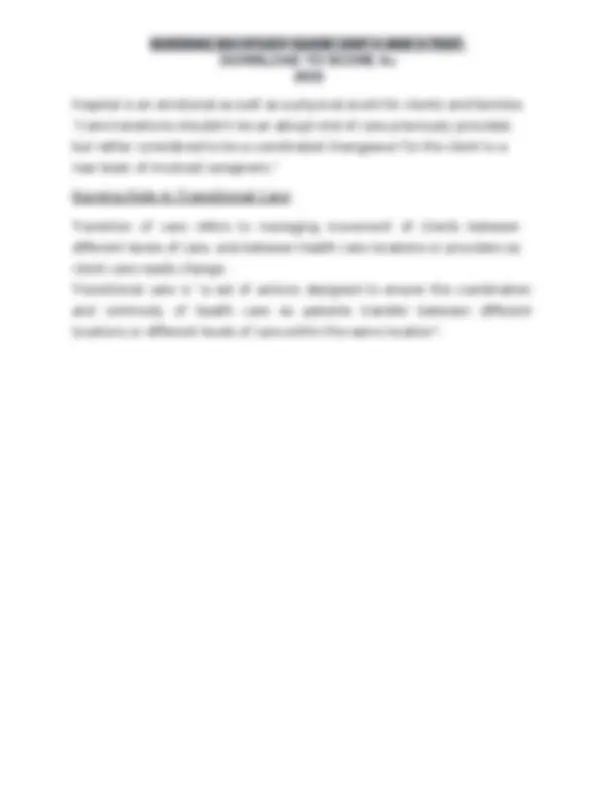
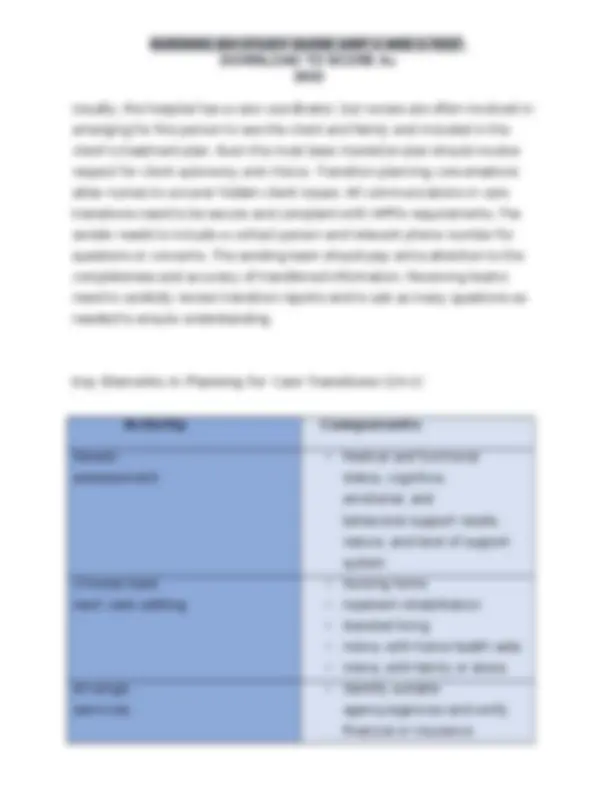
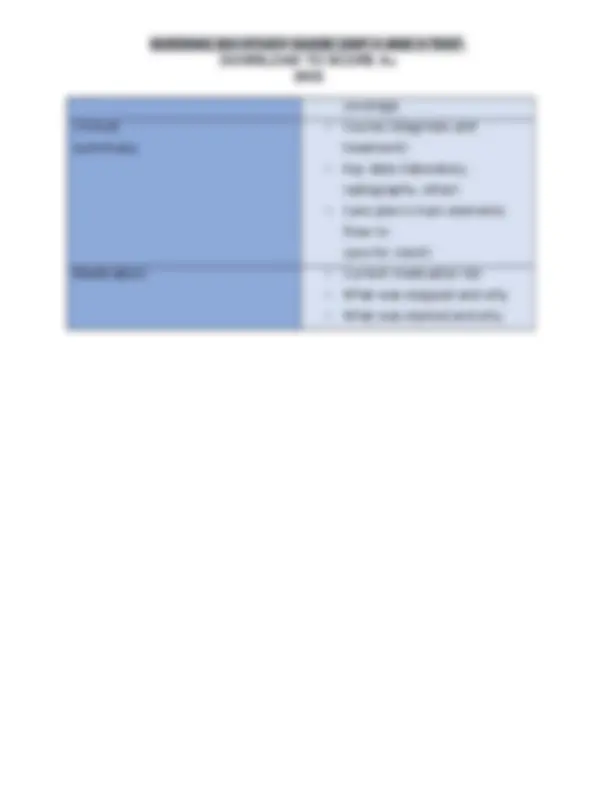
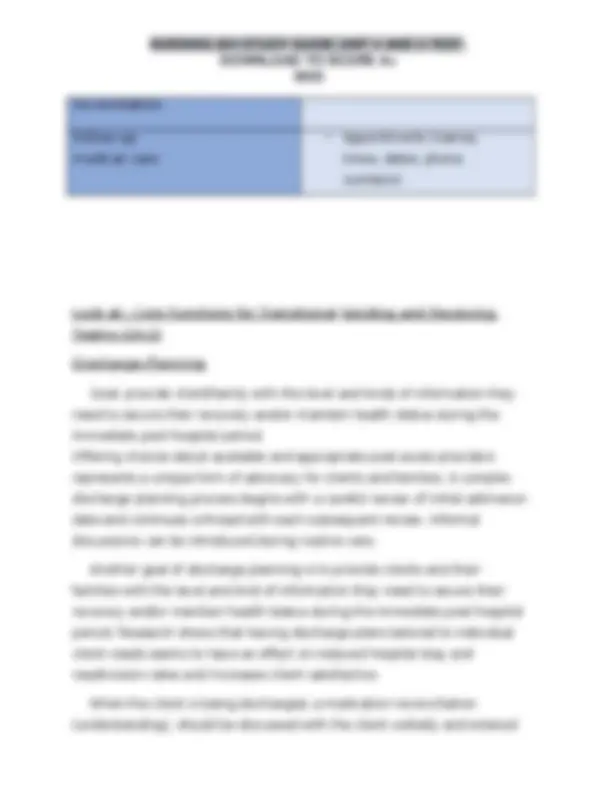
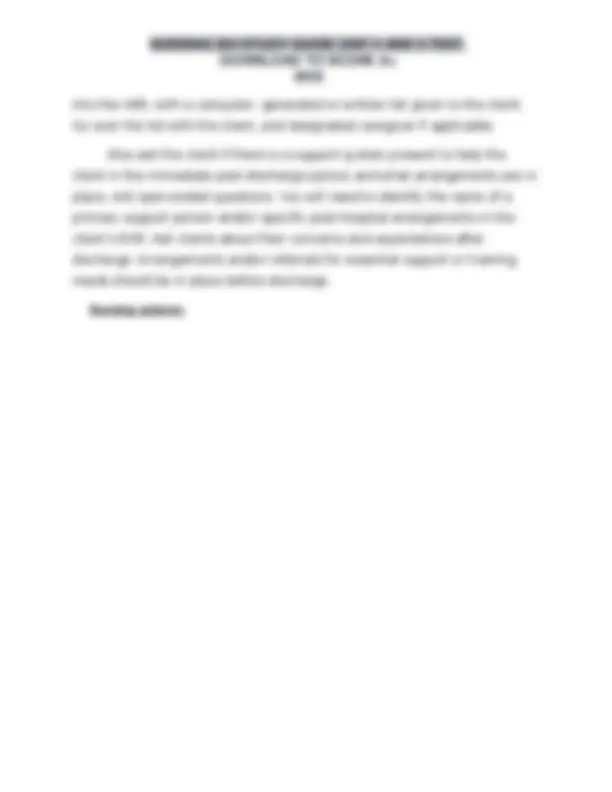
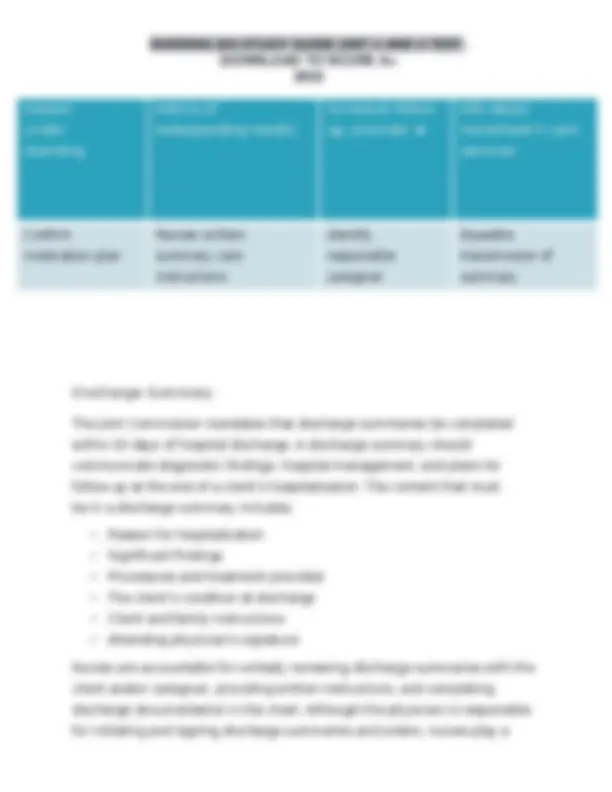
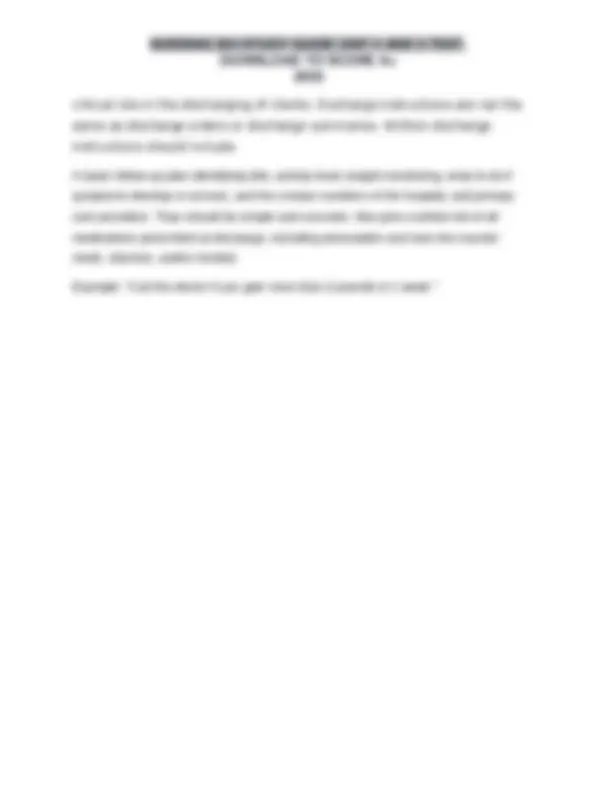
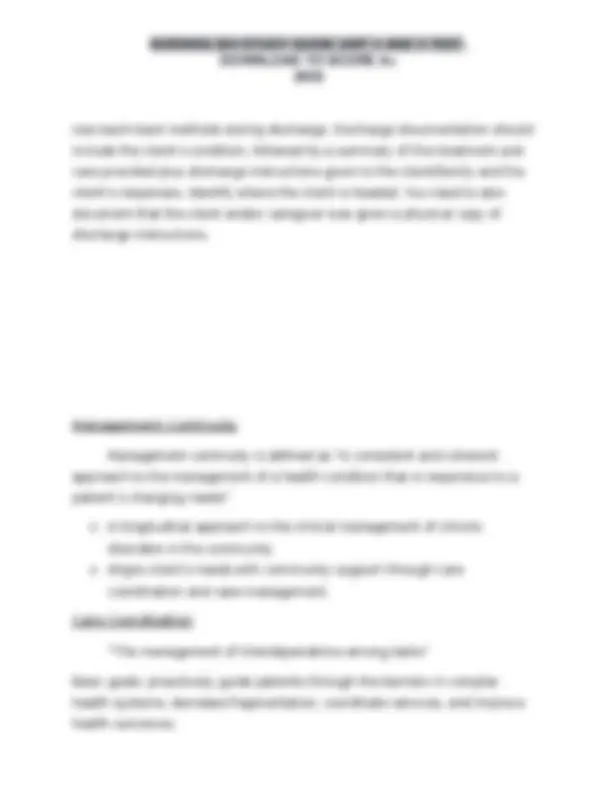
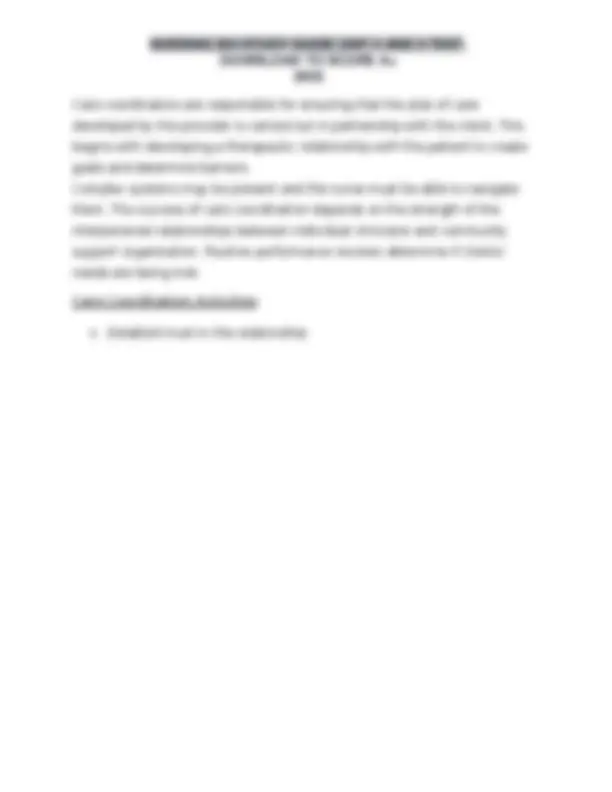
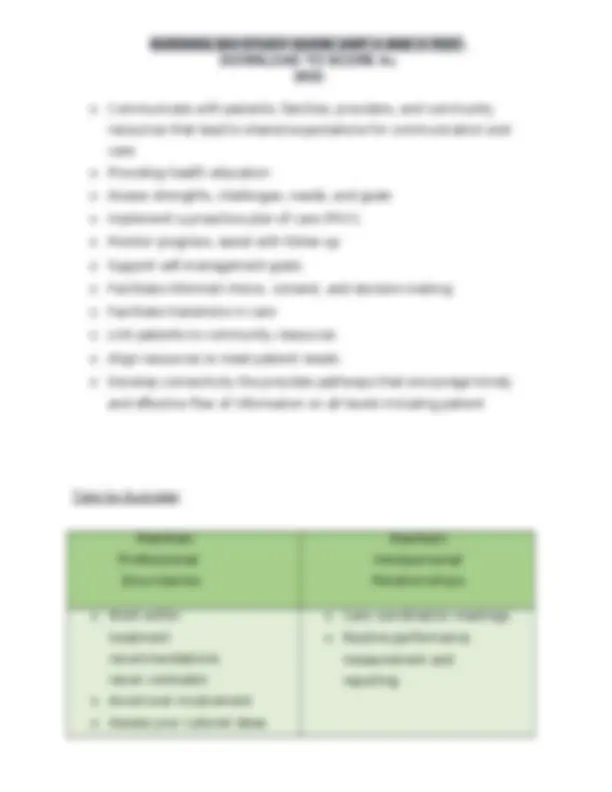
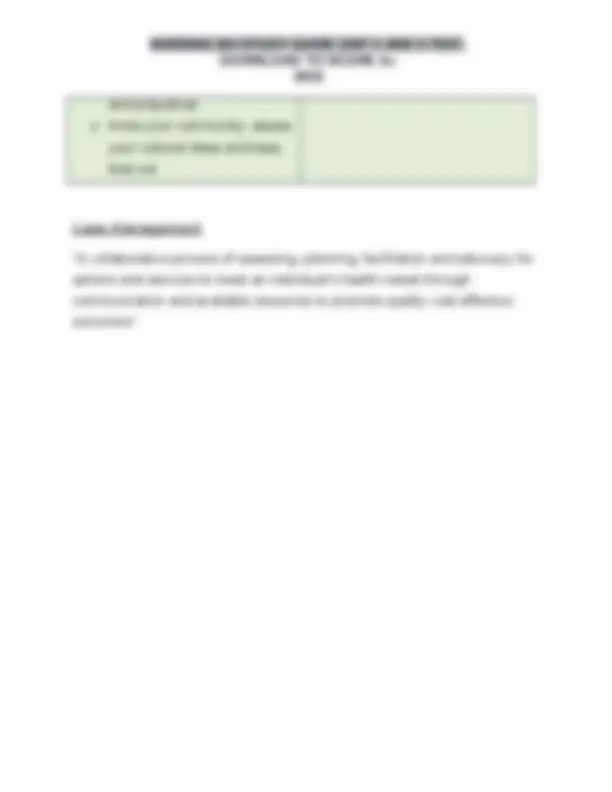
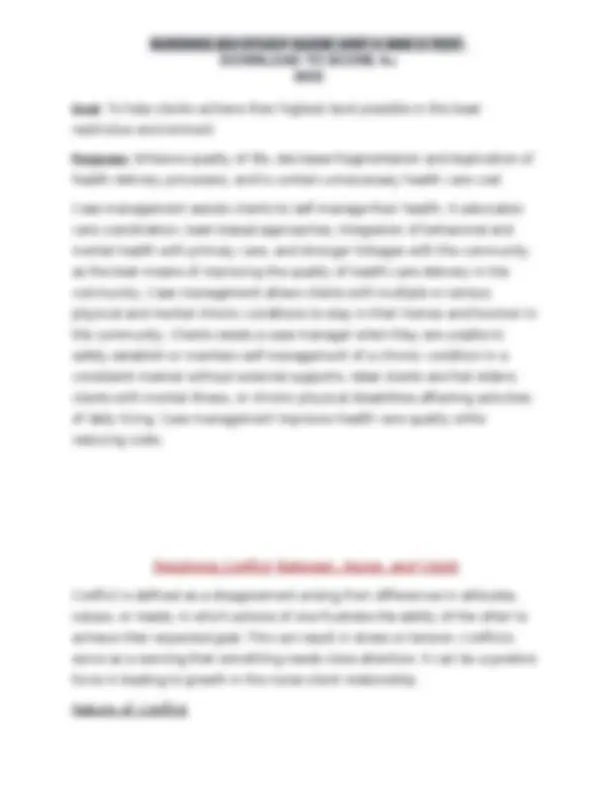

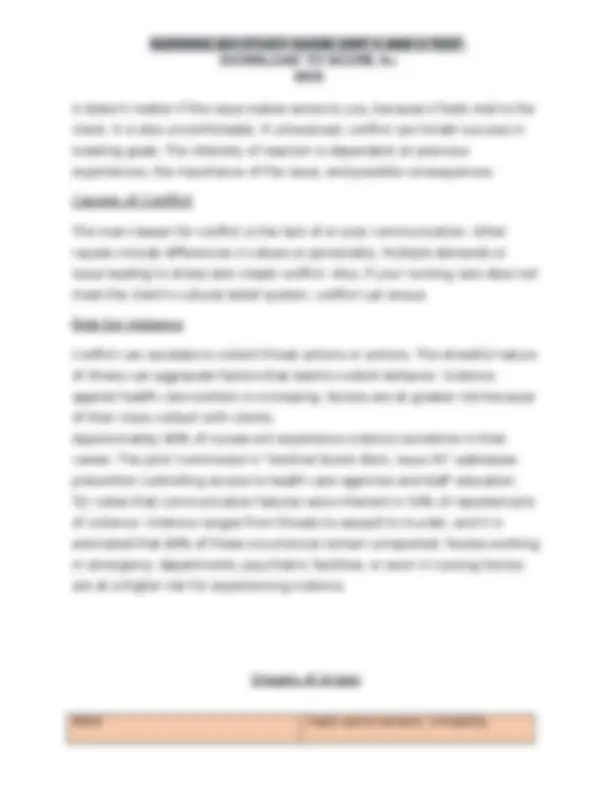
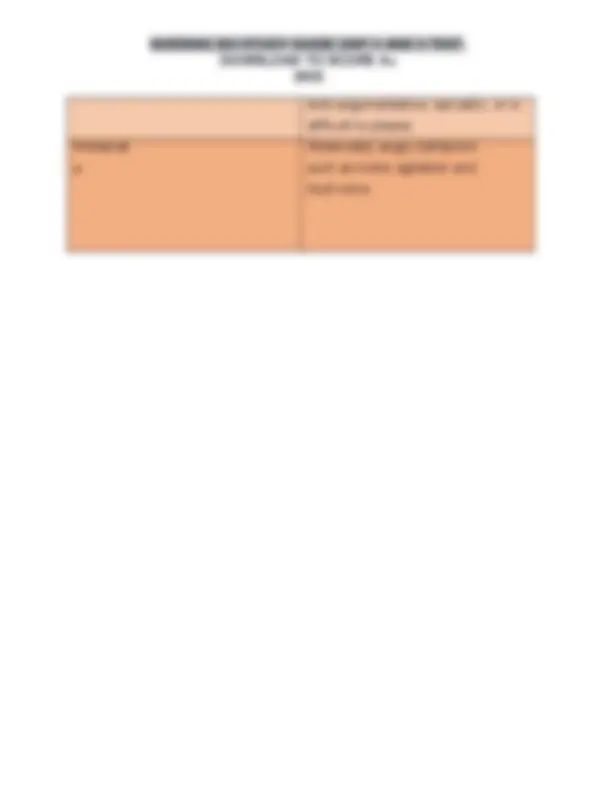
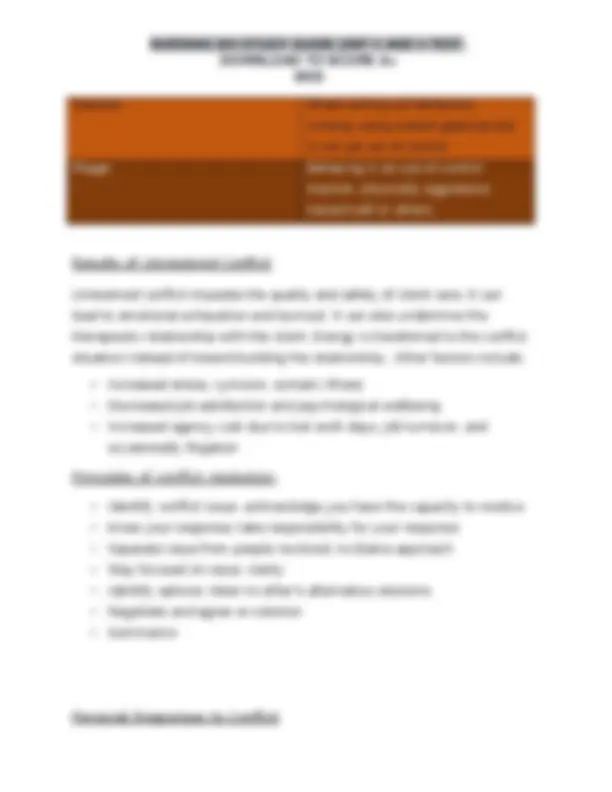
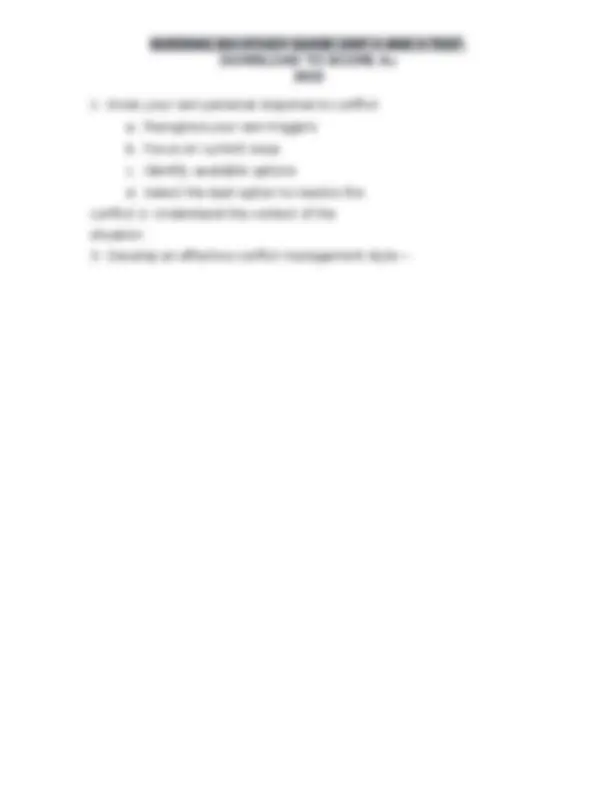
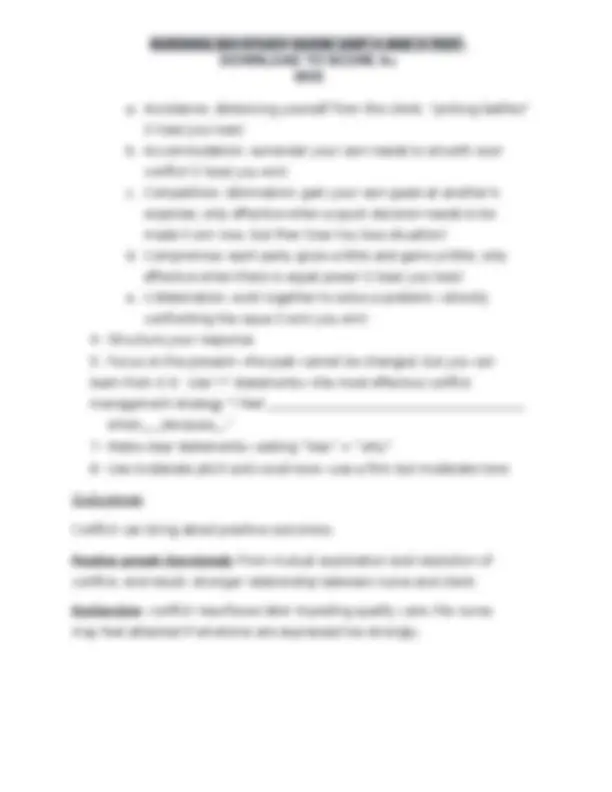
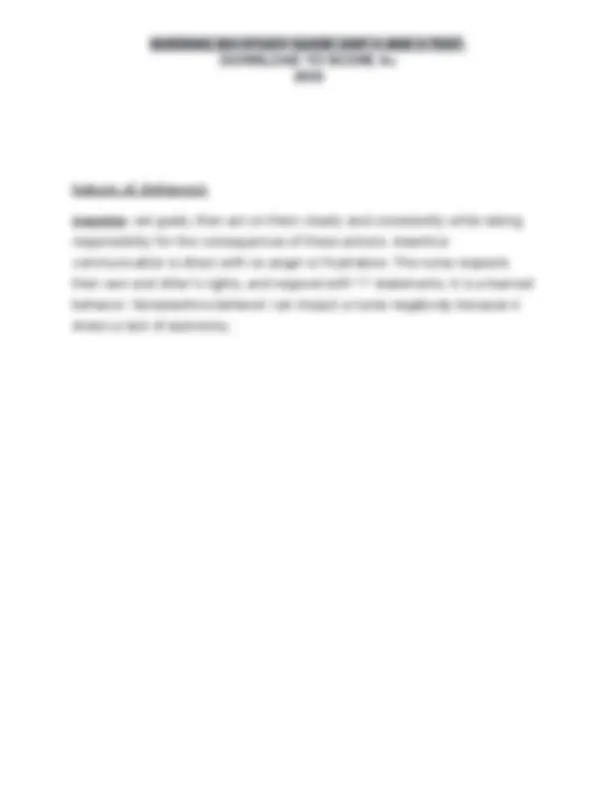
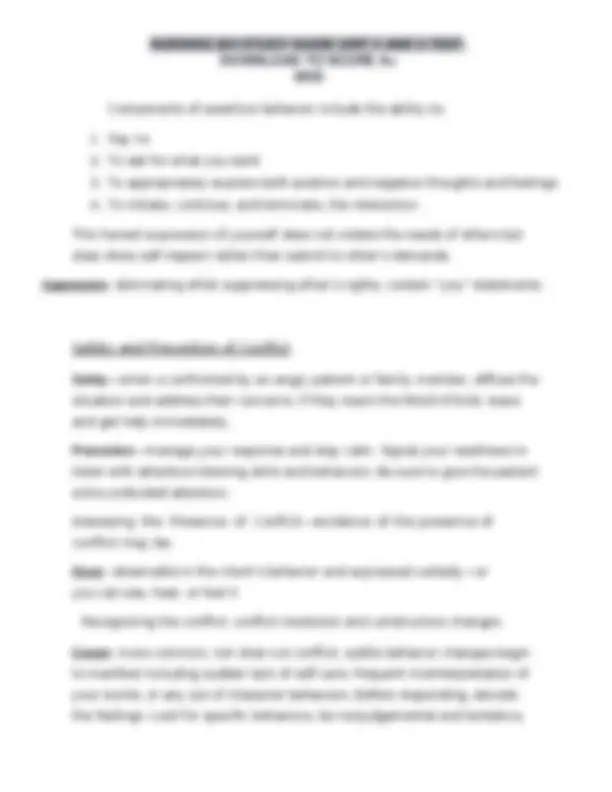
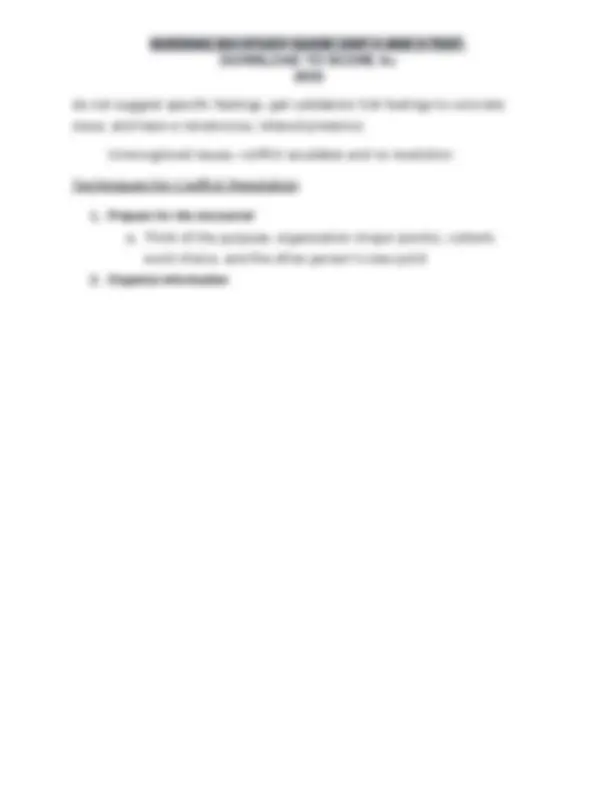
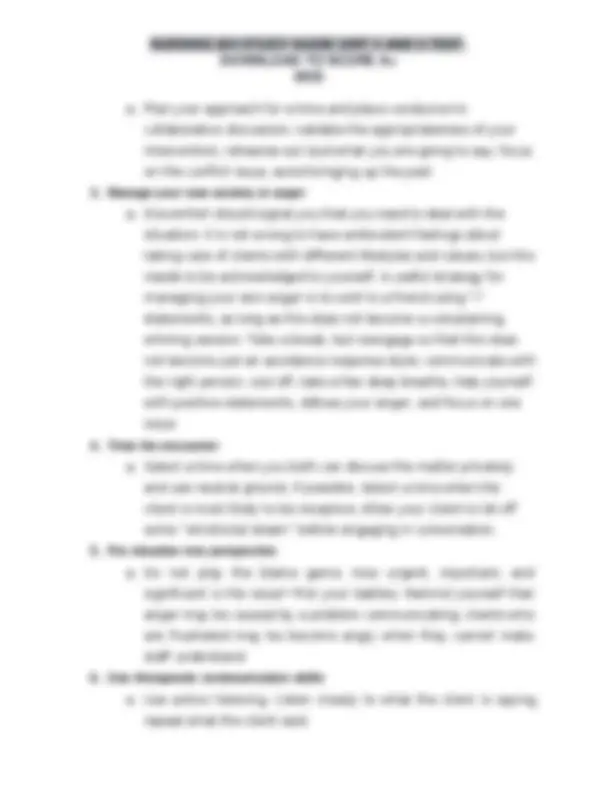
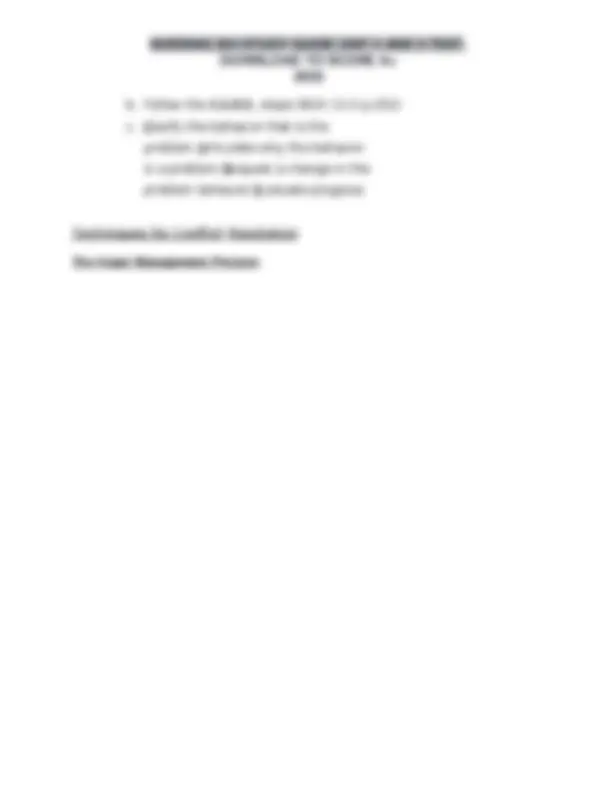
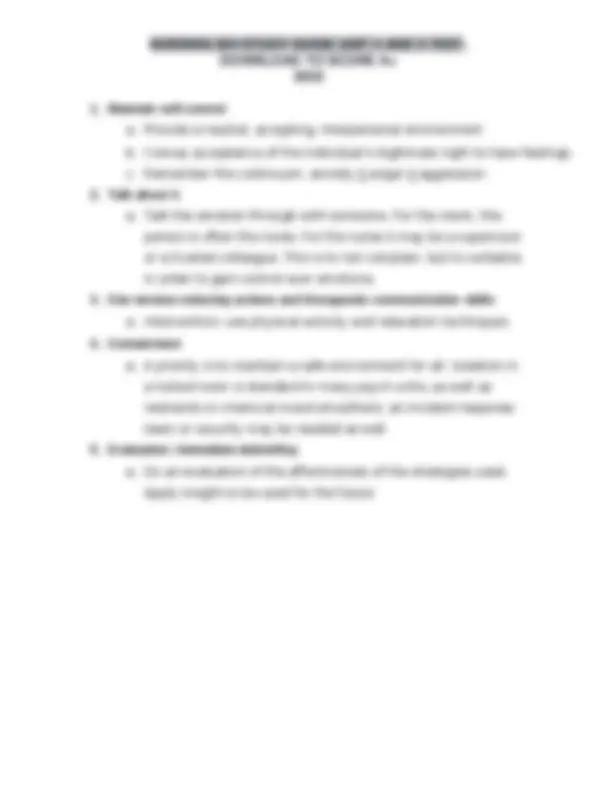


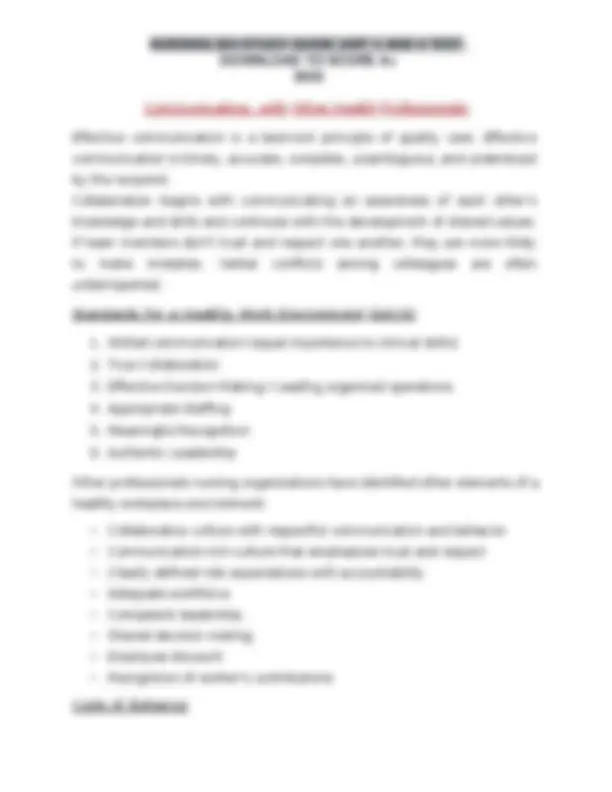

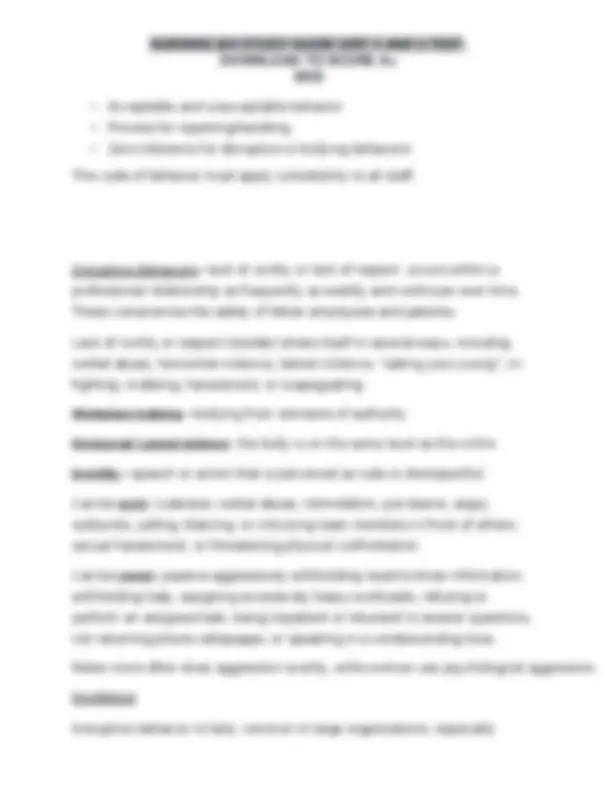
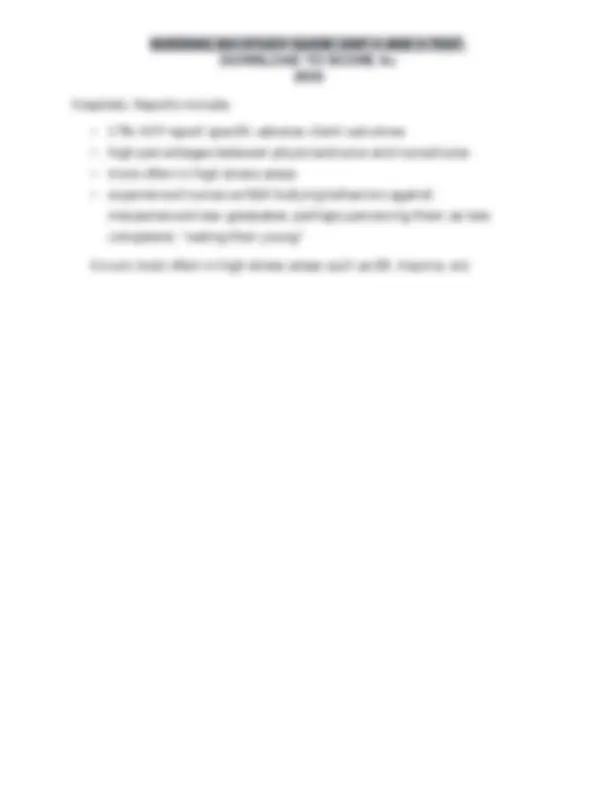
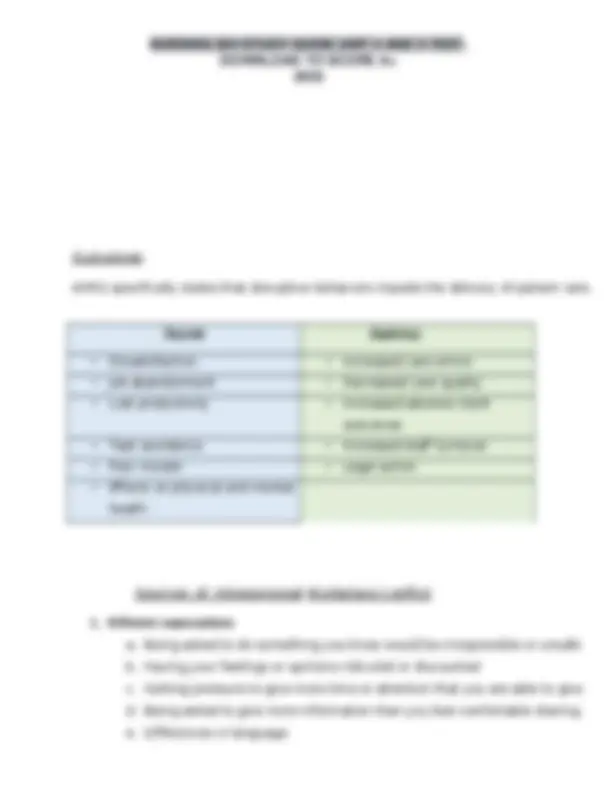

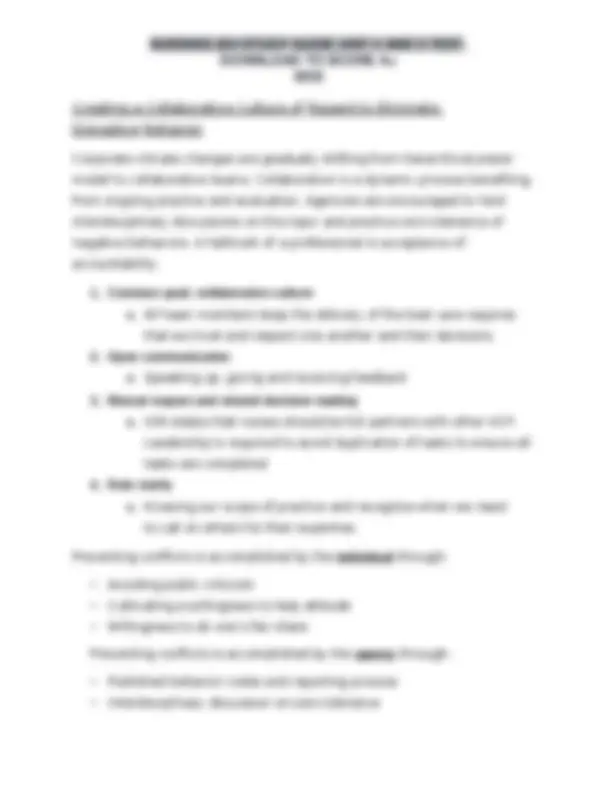
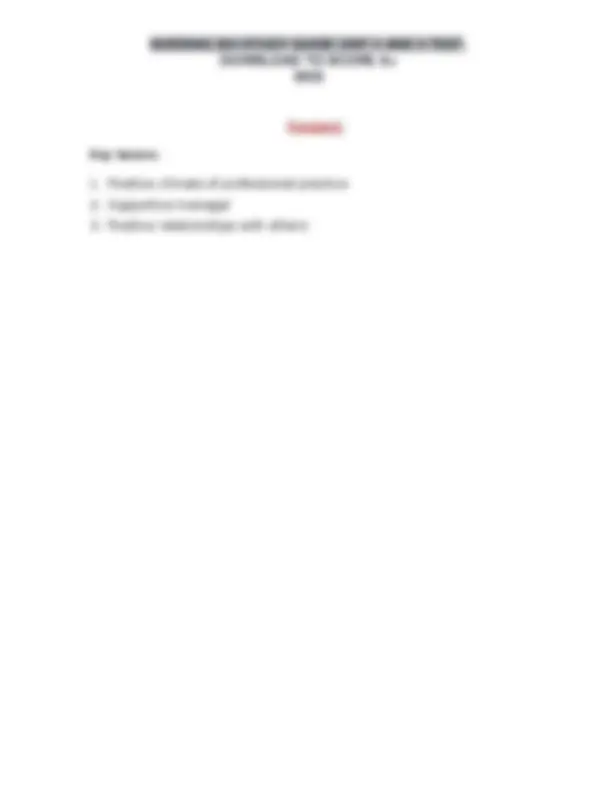

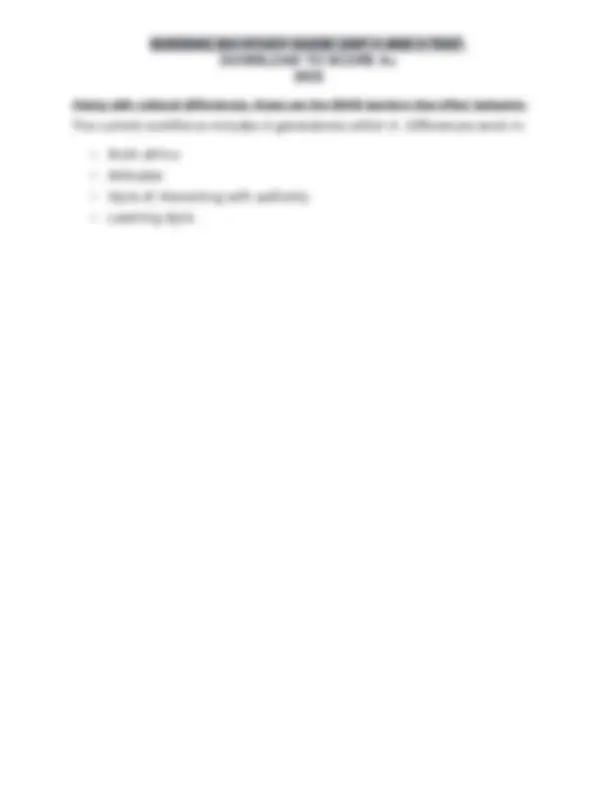



Study with the several resources on Docsity

Earn points by helping other students or get them with a premium plan


Prepare for your exams
Study with the several resources on Docsity

Earn points to download
Earn points by helping other students or get them with a premium plan
Community
Ask the community for help and clear up your study doubts
Discover the best universities in your country according to Docsity users
Free resources
Download our free guides on studying techniques, anxiety management strategies, and thesis advice from Docsity tutors
The evolution of nursing roles from functional support to leadership and first-line providers, and the importance of continuity of care in the context of increasing healthcare complexities and client diversity. It highlights the need for structural shifts in healthcare education and the development of self-management care models, integrated team approaches, and interprofessional partnerships.
Typology: Study notes
1 / 91

This page cannot be seen from the preview
Don't miss anything!




















































































There are two categories of roles one can possess: Ascribed role: immediate at birth Acquired role: roles given throughout life It is important to identify where roles may be incongruent. Standards for individual roles are influenced by race, religion, etc. Role performance must also be determined in order to provide the best care. Playing a role is expected in order to be an active participant and part of the health care team. Nurse’s Roles Professional nurses are now the largest group of HCPs. They spend the most time out of all HCPs with clients and families at the bedside. The roles of the professional nurse are steadily evolving. Professional nursing roles have steadily evolved from being that of a functional “hand- maiden of the physician” to current national expectations for nurses to assume leadership roles and to act as first-line providers in implementing health care reform initiatives. Professional nurses are now assuming leadership and advanced practice roles — licensed skilled practitioners who have a minimum Master’s degree and have a specialty such as pediatrics, cardiovascular, etc. Advanced Practice nurses have diagnosis and prescriptive authority under a physician. Nurses are also taking on leadership roles that require less time at the bed side and more time supervising. Leadership roles are emphasized as answering, “how can we best impact the client without being by the bedside?” Nurses must develop a unified advocacy role in putting forth the value of nurses as skilled health providers. Evolved scope of practice and professional standards serve as the foundation for practice accountability
and decision authority in contemporary nursing practice.
action Obtain a C onsensus g. Avoid negative comments that can effect the self-esteem of the receiver (Use “I” statements- “I feel that this should be changed”) h. Consider the other’s viewpoint
3. Collaborate
Physician – Nurse Conflict Resolution Both parties are striving to avoid open disagreements. Although there may the nurse may be reluctant, it is important to express a concern you have about your patient. Nurses influence physician- client communication. Nurses assess what physicians tell clients, encourage clients to seek clarification, and support our client’s right to ask questions. Nurses have a responsibility to foster good physician-client communication. A common
Avoid Barriers to Resolution
Strategies to Remove Barriers to Communication with Other Professionals Once it is determined that conflict is present, look for the basis of the conflict and label it as personal or professional. If it is personal in nature, it may not be appropriate to seek peer negotiation. Sharing feelings about a conflict with others helps reduce its intensity. Prevent conflict by behaving with respect. Unsupportive and uncivil coworkers and workplace conflicts negatively influence retention of nursing staff. It is important for experienced nurses to train/mentor new nurses. It is also important to clarify
communications with other HCPs. Communication can become distorted rather than open when you are concerned about offending a more powerful individual. Also use conflict-resolution strategies such as self-reflection, stress-reduction, collaboration in finding a resolution, and responding to put- downs. Put-down —an unwarranted criticism with defensiveness, and causes embarrassment Learning response —contains factual information to give constructive criticism Responding to put-downs
A&B Carpenito 25-26, 66-70,428-433, 438-440, 454-455, 465- 466 Lesson 12 A&B Carpenito 469-
Lesson 13 A&B Carpenito 241- Lesson 14 A&B Carpenito 450- Four Core Categories of APRN APRN- a licensed skilled practitioner holding a minimum of a masters degree in a clinical specialty with the expert knowledge base, complex decision- making skills and clinical competencies required for expanded specialty practice.
Public Advocacy Roles Contemporary nurses are expected to advocate for health care transformation and to take a leadership role in addressing environmental, social, and economic determinants of health. Nurses also provide leadership and coordination in health care improvement through education and participation in research. Caring Leadership and Technology Digital technology has become the predominate means of monitoring, communicating, and interacting with patients. Nurses must be mindful that technology supports their work, not drive it. When nurses integrate the caring aspects of communication with the emerging leadership of technology, they keep the essence of nursing alive and their capacity for leadership effectiveness flourishing. Professional Nursing Role Core Competencies Portrays what nurses and other HCPs are doing for patients.
Professional Role Clarity- an essential quality of effective leadership Issues : Expanded scope of practice and expectations of contemporary nurses Lack of consistency surrounding role, responsibility and scope of practice of APRNs Clarity is necessary to: Communicate our value to other HC professionals Support client safety initiatives that lead to improved client outcomes Stimulate confidence in others Nursing Education and Professional Role Development Transformation of the healthcare system requires a change in the education. A system approach to practice based education underscores the interdependence between health and education. Three structural shifts in health care education are required to accomplish this task: o Fact memorization to searching, analysis, and synthesis of information for decision making o Seeking professional credentials to achieving core competencies for effective teamwork in health systems; and o Non-critical adoption of educational models to creative adaptation of global resources to address local priorities Competency is defined as “a set of capabilities, aptitude, and experience” Be a resource for the members, but also know the resources to reach out to.
Health mandates in health care reform the emphasis in team approaches, and that nurses are full partners. The key messages state that: o Nurses should practice to the full extent of their education and training o Nurses should achieve their education and training o Nurses should achieve higher levels of education and training through an improved education that promotes seamless academic progression. o Nurses should be full partners, with physicians and other health professionals, in redesigning health care in the U.S. o Effective workforce planning and policy making require better data collection and an improved information infrastructure.
New Expectations for Interprofessional Role Relationships To achieve IOM goals, the nurse must: o Develop new partnerships with community, business, and health care institutions o Educate themselves to their fullest potential, with availability of seamless progression to advanced levels of education o Promote inclusion of nurses on local, state, and national advisory and policy committees o Develop care models that cross disciplines and foster collaboration o Adapt education and curriculum to new century demands and advocating for the education and health policies to support those innovations Clear communication, altruism, caring, and professional ethics are essential components of interprofessional professionalism. Professional role behaviors and strong relationships with other professional colleagues include accountability for one’s fair share of the workload. Use critical thinking to focus your direction on essential points, even in informal discussions. Collaborative Teamwork and Communication Overall treatment goals should function as the primary guiding force in team conversations. Interdisciplinary team functioning is both role-focused and tasked-based, with skill sets focused on developing mutual trust, shared decision-making and integrated functionality. Different disciplines have different skill sets, personalities, egos, and idiosyncrasies. There is a need to create an esprit de corps which encompasses:
Communication: email vs. face-to-face Develop Support Systems Collegial Relationships are an important determinant of success as professional men and women entering nursing practice. Mutual support networks that share information, ideas, and strategies with colleagues add a collective strength to personal efforts and minimize the possibility of misunderstanding. Professional organization do not usually have the primary purpose of providing emotional support; however, small subgroups within professional organizations may be used for personal support. Positive evaluations are tied to bonuses, which are an additional incentive for good rapport. Communication Qualities o Integrity o Respect o Dependability o Good sense of humor o Openness to sharing Organizational Climate of Mutual Respect Interdisciplinary Communication (Groups) o Collaborative Rounds o Team Briefings o Committees Organizational System
Chain of command is the order of authority and power in an organization. It is passed down from top management to every employee at every level. Instructions flow downward along the chain of command and accountability flows upward. Each organizational system defines its own chain of command and rules about social processes in professional communication. Some of the reasons for avoiding positive interactions stem from an internal circular process of faulty thinking. Because communication is viewed as part of a process, the sender and receiver act on the information received, which may or may not represent the reality of the situation. TJC is requiring all health care organizations to have written codes of behavior and to establish internal processes to handle disruptive behaviors. Ongoing continuing